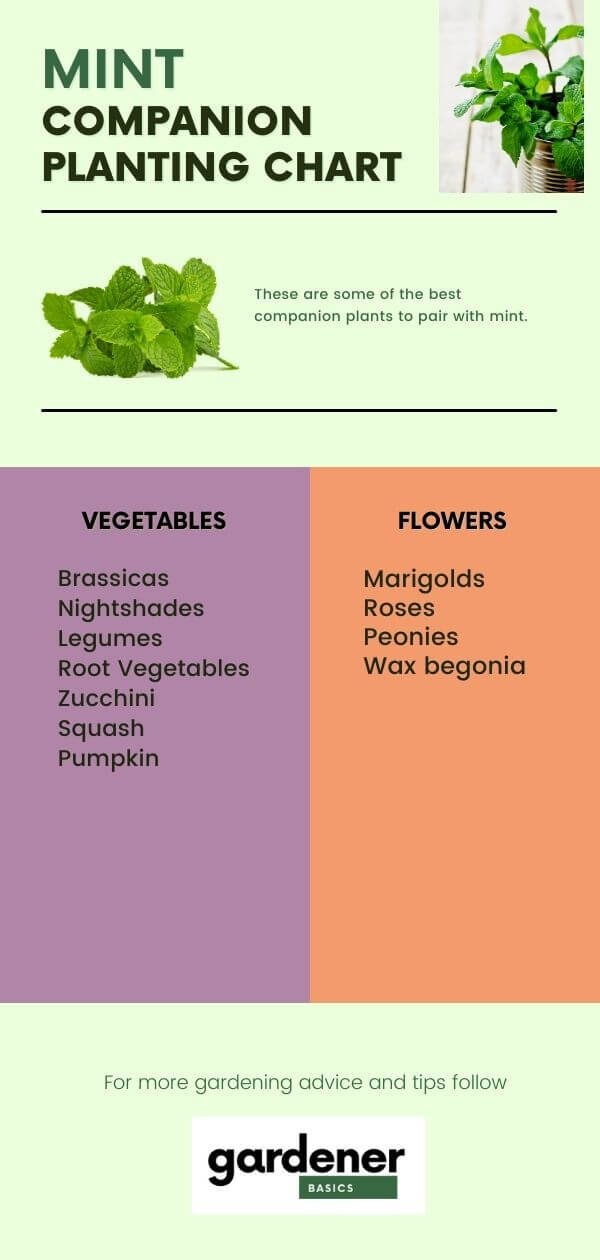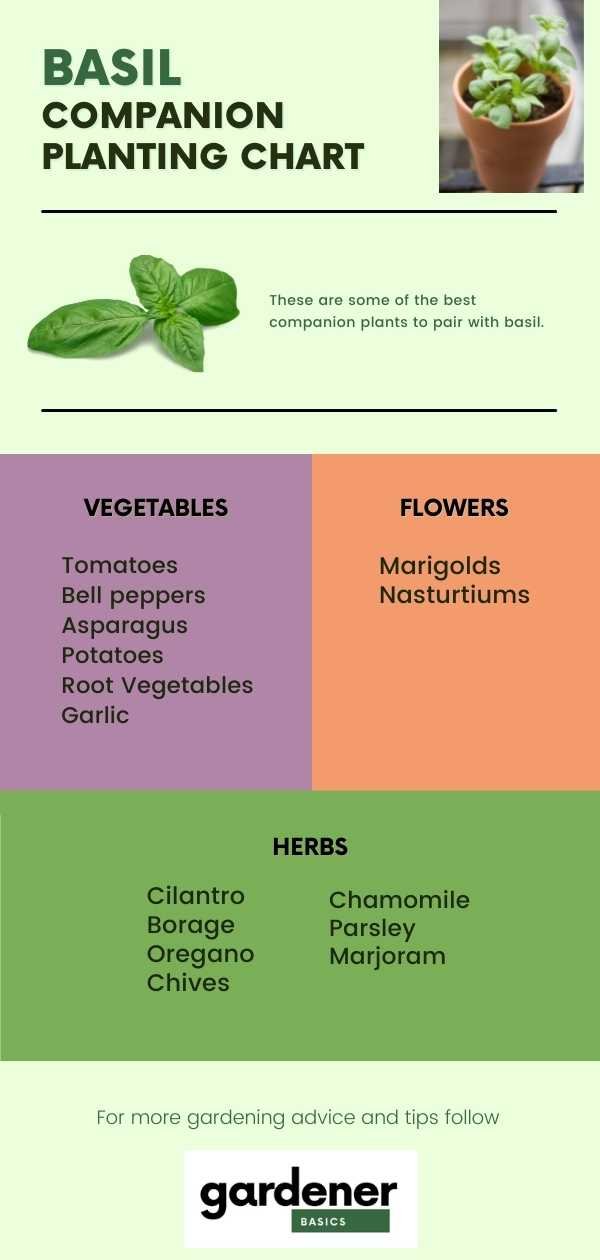Best Hairstyles For Oval Faces Men In 10 Jul 2023 4:30 AM (last year)
Title: Best Hairstyles for Oval Faces Men in 2023
Introduction:
Oval faces are considered to be the most versatile face shape, as they can pull off a wide variety of hairstyles. If you have an oval face, you're in luck! There are many great hairstyles that will flatter your features and make you look your best.
In this blog post, we'll take a look at some of the best hairstyles for oval faces men in 2023. We'll discuss the different factors to consider when choosing a hairstyle, and we'll provide some tips on how to style your hair for the perfect look.
Main Content:
When choosing a hairstyle for your oval face, there are a few factors you'll want to keep in mind:
- The length of your hair: If you have short hair, you'll have more limited options. However, there are still some great hairstyles that will work for you, such as the buzz cut, crew cut, and Caesar cut.
- The thickness of your hair: If you have thick hair, you can get away with more volume and texture. However, if you have thin hair, you'll want to choose a hairstyle that will add volume and definition.
- Your personal style: Ultimately, the best hairstyle for you is the one that you feel most confident and comfortable in. So don't be afraid to experiment until you find a style that you love.
Here are some of the best hairstyles for oval faces men in 2023:
- The buzz cut: The buzz cut is a classic, low-maintenance hairstyle that is perfect for men with oval faces. It's also a great choice for hot weather, as it keeps your hair off your face and neck.

- The crew cut: The crew cut is another short, easy-to-style hairstyle that looks great on men with oval faces. It's a bit more versatile than the buzz cut, and you can add a bit of length and texture to it if you want.

- The Caesar cut: The Caesar cut is a short, textured hairstyle that is named after Julius Caesar. It's a great choice for men with thick hair, as it adds volume and definition.

- The side part: The side part is a classic hairstyle that has been popular for centuries. It's a great choice for men with oval faces, as it elongates the face and makes it look slimmer.

- The quiff: The quiff is a slightly more modern hairstyle that is perfect for men with thick, wavy hair. It's a great way to add volume and style to your hair.

- The pompadour: The pompadour is a classic hairstyle that is making a comeback in 2023. It's a great choice for men with oval faces, as it adds height and volume to the face.

- The undercut: The undercut is a trendy hairstyle that is perfect for men with oval faces. It's characterized by short hair on the sides and back, with longer hair on top.

- The fade: The fade is another trendy hairstyle that is perfect for men with oval faces. It's similar to the undercut, but the hair on the sides and back is faded down to the skin.

Conclusion:
These are just a few of the best hairstyles for oval faces men in 2023. With so many great options to choose from, you're sure to find the perfect hairstyle to flatter your features and make you look your best.
If you have an oval face, you're in luck! Oval faces are considered to be the most versatile face shape, and there are many different hairstyles that can flatter your features. To find the perfect hairstyle for you, consider your lifestyle, hair type, and personal style.
Here are a few of the most popular hairstyles for oval faces:
- Buzz cut: This short, no-fuss hairstyle is perfect for men with active lifestyles.

- Crew cut and fade: This classic hairstyle is flattering for men with all hair types.

- Pompadour: This retro hairstyle is making a comeback. It's perfect for men who want to add some height and volume to their hair.

- Brush up: This slicked-back hairstyle is perfect for formal occasions.
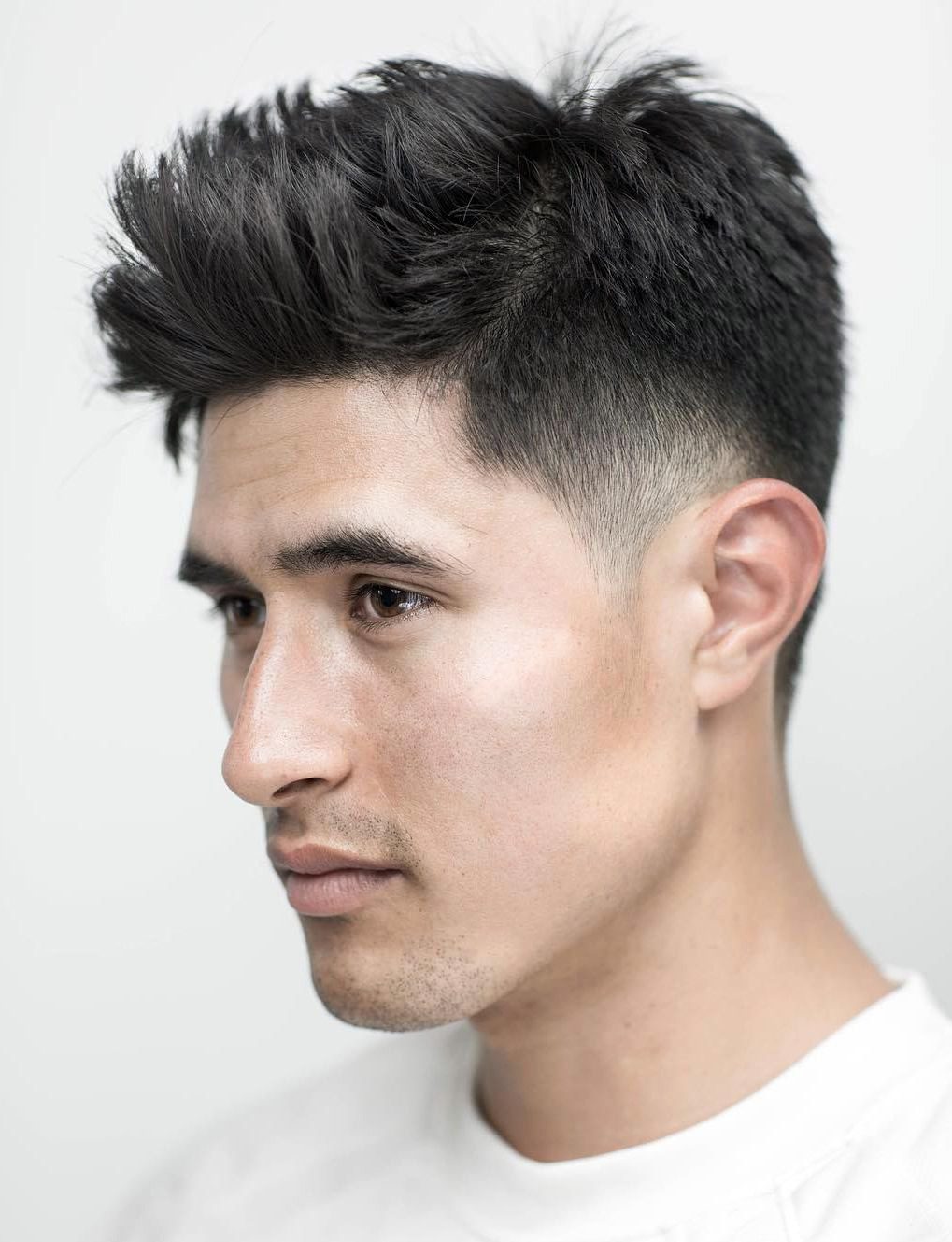
- The fringe: This versatile hairstyle can be styled in many different ways. It's perfect for men who want to frame their face and add some personality to their look.

- Faux Hawk: This modern take on the classic mohawk is perfect for men who want a bold and edgy hairstyle.
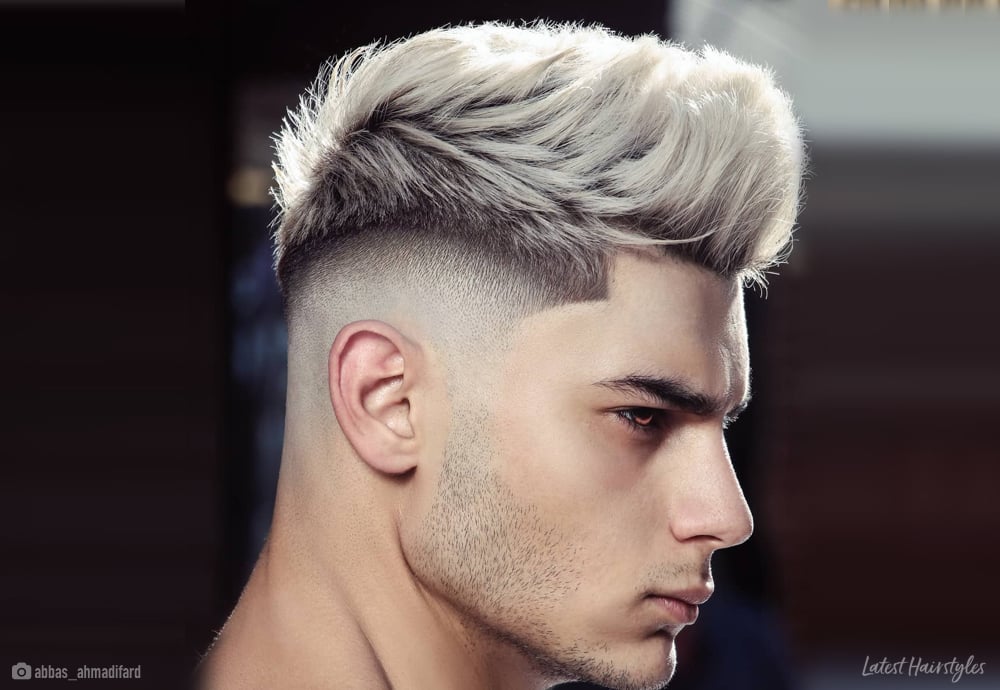
- Undercut with comb over: This stylish hairstyle is perfect for men who want to show off their facial features.

- Taper fade with a quiff: This classic hairstyle is perfect for men who want a sophisticated and put-together look.

For more information about hairstyles for oval face men, visit New Short Hairstyle.
FAQ of hairstyle oval face man
- What are the best hairstyles for oval face men?
There are many great hairstyles for oval face men, but some of the most popular include:
* Side part: This classic haircut is versatile and flattering for all hair types.
* Slick back: This sleek style is perfect for men with thick, straight hair.
* Pompadour: This retro style is making a comeback and is perfect for men with high cheekbones.
* Undercut: This modern style is edgy and stylish.
* Quiff: This playful style is perfect for men with medium-length hair.
- What are some tips for styling hair for oval face men?
When styling your hair, there are a few things you can keep in mind to flatter your oval face shape:
* Add volume to the top of your head to elongate your face.
* Avoid hairstyles that are too short or too long, as these can make your face look wider.
* Use products to create a smooth, polished finish.
* Experiment with different styles to find one that you feel confident and comfortable in.
- What are some mistakes to avoid when styling hair for oval face men?
Here are a few mistakes to avoid when styling hair for oval face men:
* Overdoing it with the product. Too much product can weigh your hair down and make your face look wider.
* Wearing your hair too flat. This can make your face look shorter and wider.
* Getting a haircut that is too short or too long. As mentioned above, these can make your face look wider.
* Not styling your hair at all. Even if you have short hair, it's important to style it in a way that flatters your face shape.
Image of hairstyle oval face man
- Short textured crop. This short haircut is perfect for men with oval faces because it is flattering and easy to style. The hair is cut short on the sides and back, with a slightly longer length on top. The texture of the hair is also important, as it helps to create a more flattering shape for oval faces.

- Slicked back undercut. This classic haircut is another great option for men with oval faces. The hair is slicked back and parted on the side, with a short undercut on the sides and back. This haircut is both stylish and professional, and it can be dressed up or down depending on the occasion.

- Side swept fringe. This haircut is perfect for men with oval faces who want to add a touch of personality to their style. The hair is swept to the side, with a longer fringe that falls over the forehead. This haircut is both stylish and flattering, and it can be worn with a variety of hair textures.

- Quiff. The quiff is a classic hairstyle that has been popular for decades. It is perfect for men with oval faces who want a stylish and versatile haircut. The hair is swept upwards and back, with a short length on the sides and back. The quiff can be worn with a variety of hair products to achieve different looks, from a casual tousled style to a more polished and formal look.

- Taper fade. The taper fade is a popular haircut that is flattering for men with oval faces. The hair is tapered from the top of the head to the sides and back, with a gradual fade. This haircut is both stylish and low-maintenance, and it can be dressed up or down depending on the occasion.

- Pompadour. The pompadour is a classic hairstyle that is perfect for men with oval faces who want to make a statement. The hair is swept upwards and back, with a high volume and a sharp part. The pompadour can be worn with a variety of hair products to achieve different looks, from a slicked-back style to a more voluminous and textured look.

- High and tight. The high and tight is a military-inspired haircut that is perfect for men with oval faces who want a short and stylish style. The hair is cut very short on the sides and back, with a slightly longer length on top. The high and tight is both stylish and low-maintenance, and it is a great option for men who are active or who work in a professional environment.

- Crew cut. The crew cut is another short and stylish haircut that is perfect for men with oval faces. The hair is cut very short all over, with a consistent length. The crew cut is both stylish and low-maintenance, and it is a great option for men who are active or who work in a professional environment.

- Buzz cut. The buzz cut is the shortest haircut on this list, but it can still be flattering for men with oval faces. The hair is cut very short, with a consistent length all over. The buzz cut is both stylish and low-maintenance, and it is a great option for men who are active or who work in a professional environment.

- Grow it out. If you are not sure what hairstyle to choose, you can always grow your hair out and see what looks best on you. Oval faces are versatile and can accommodate a variety of hairstyles, so you have plenty of options to choose from.

Pinterestworthy Cute Hairstyles For Any Occasion 9 Jul 2023 5:26 AM (last year)
Introduction
When it comes to hairstyles, there are endless possibilities. But sometimes, it can be hard to find a hairstyle that is both cute and stylish, and that also works for any occasion. That's where Pinterest comes in. Pinterest is a great resource for finding all sorts of hairstyle inspiration, from simple everyday looks to more elaborate updos.
In this blog post, we will share some of our favorite Pinterest-worthy cute hairstyles for any occasion. Whether you're looking for a hairstyle for work, a night out, or a special event, we have something for you. So read on for some hair inspiration!
Main Content
1. The Half-Up, Half-Down Braid
The half-up, half-down braid is a classic hairstyle that is perfect for any occasion. It is simple to do, but it looks effortlessly stylish. To create this hairstyle, simply divide your hair in half and braid one half. Then, loosely twist the other half and secure it with a hair elastic. You can add a headband or hair clip for a more polished look.
2. The Messy Bun
The messy bun is another great option for a cute and easy hairstyle. It is perfect for days when you don't have a lot of time to style your hair, but you still want to look put-together. To create this hairstyle, simply gather your hair into a high ponytail and twist it into a bun. Then, secure it with a hair elastic and tuck any loose strands out of sight.
3. The Braided Bun
The braided bun is a more elegant option for a cute hairstyle. It is perfect for work, special events, or even a night out. To create this hairstyle, simply braid your hair as usual. Then, twist the braid into a bun and secure it with a hair elastic. You can add a hair pin or flower for a more formal look.
4. The Waterfall Braid
The waterfall braid is a beautiful and intricate hairstyle that is perfect for a special occasion. To create this hairstyle, simply divide your hair into three sections. Then, braid the first section as usual. As you braid, bring a small section of hair from the middle section over to the braid. Continue braiding, alternating sections of hair from the middle section. Secure the end of the braid with a hair elastic.
5. The Dutch Braid
The Dutch braid is a variation of the traditional braid that creates a more textured look. To create this hairstyle, simply start braiding your hair as usual. However, instead of crossing the outside strand over the middle strand, cross it under the middle strand. Continue braiding in this way until you reach the end. Secure the end of the braid with a hair elastic.
6. The Fishtail Braid
The fishtail braid is another beautiful and intricate hairstyle that is perfect for a special occasion. To create this hairstyle, simply divide your hair into two sections. Then, braid the two sections together, alternating strands from each section. Continue braiding until you reach the end. Secure the end of the braid with a hair elastic.
7. The Updo
The updo is a great option for a cute and sophisticated hairstyle. It is perfect for work, special events, or even a night out. There are endless possibilities when it comes to updos, so you can find one that suits your style and occasion. Some popular updo styles include the chignon, the bun, and the cascading braid.
8. The Ponytail
The ponytail is a classic hairstyle that is perfect for any occasion. It is simple to do, but it can be dressed up or down depending on the occasion. For a casual look, simply pull your hair back into a high ponytail and secure it with a hair elastic. For a more formal look, try a low ponytail or a side ponytail.
Conclusion
These are just a few of our favorite Pinterest-worthy cute hairstyles for any occasion. With so many options to choose from, you are sure to find the perfect hairstyle for your next event. So get creative and have fun with your hair!
Are you looking for cute hairstyles inspired by Pinterest? Look no further! Tresses and Trends is a great resource for finding all sorts of hairstyle ideas, from simple updos to elaborate braids. With thousands of pins to browse, you're sure to find the perfect hairstyle for your next event.
In addition to hairstyle inspiration, Tresses and Trends also offers tips and tutorials on how to achieve your desired look. Whether you're a beginner or a seasoned pro, you'll find everything you need to know to create your own Pinterest-worthy hairstyle.
So what are you waiting for? Visit Tresses and Trends today and start browsing!
FAQ of pinterest cute hairstyle
What are some cute hairstyles that I can find on Pinterest?
Pinterest is a great resource for finding cute hairstyles for all hair types and lengths. Here are a few popular options:
* Half-up, half-down hairstyles: These styles are both stylish and versatile. You can wear them for formal or informal occasions, and they can be customized to flatter your face shape and hair type.
* Braids: Braids are a classic and timeless hairstyle that can be dressed up or down. There are endless braiding techniques to choose from, so you're sure to find a style that you love.
* Updos: Updos are a great way to keep your hair out of your face and look polished. They're also perfect for special occasions.
* Messy buns: Messy buns are a quick and easy way to style your hair. They're also perfect for days when you don't have a lot of time to get ready.
* Accessorized hairstyles: Adding accessories to your hairstyle is a great way to add a touch of personality. There are endless possibilities, so have fun experimenting!
- What are some tips for finding the right cute hairstyle for me?
When looking for a cute hairstyle, it's important to consider your hair type, face shape, and lifestyle. Here are a few things to keep in mind:
* Hair type: If you have straight hair, you'll have a lot of different hairstyle options to choose from. If you have curly or textured hair, you'll want to find styles that flatter your natural curl pattern.
* Face shape: The shape of your face can also help you narrow down your hairstyle options. For example, if you have a round face, you'll want to avoid hairstyles that add width to your face.
* Lifestyle: If you have a busy lifestyle, you'll want to find hairstyles that are easy to maintain. Updos and messy buns are great options for busy women.
- How can I make a cute hairstyle last longer?
There are a few things you can do to make a cute hairstyle last longer:
* Use a good quality hairspray or gel to hold your hairstyle in place.
* Avoid touching your hair throughout the day.
* If your hair starts to get frizzy, use a little bit of oil or leave-in conditioner to tame it.
* If you're going to be out in hot or humid weather, protect your hairstyle with a styling spray.
- Where can I find tutorials for cute hairstyles?
There are a number of places where you can find tutorials for cute hairstyles. Here are a few suggestions:
* Pinterest: Pinterest is a great resource for finding tutorials for all kinds of hairstyles. Simply search for "cute hairstyles" or "hairstyle tutorials" and you'll find a wide variety of options.
* YouTube: YouTube is another great resource for finding hairstyle tutorials. There are a number of popular channels that offer tutorials for all skill levels.
* Blogs: There are a number of blogs that focus on hair and beauty. These blogs often feature hairstyle tutorials that you can follow at home.
* Magazines: Many magazines, such as _Glamour_ and _InStyle_, feature hairstyle tutorials in each issue.
Image of pinterest cute hairstyle
10 different images of Pinterest cute hairstyles that are free to use:
- Braided ponytail: This is a classic and versatile hairstyle that is perfect for school or any other occasion. To create a braided ponytail, simply divide your hair into two sections and braid each section. Then, tie the two braids together at the back of your head and secure with a hair elastic.

- Twisted ballerina bun: This elegant hairstyle is perfect for a special occasion. To create a twisted ballerina bun, start by gathering your hair into a high ponytail. Then, twist the ponytail and wrap it around itself to form a bun. Secure the bun with bobby pins and mist with hairspray to hold it in place.

- Sleek ponytail: This simple and sophisticated hairstyle is perfect for everyday wear. To create a sleek ponytail, brush your hair until it is smooth. Then, gather your hair into a low ponytail and secure with a hair elastic. Smooth the hair around the elastic with your fingers to create a sleek finish.

- Half up half down messy bun: This casual and relaxed hairstyle is perfect for days when you don't want to put too much effort into your hair. To create a half up half down messy bun, gather the top half of your hair into a ponytail. Then, twist the ponytail and wrap it around itself to form a bun. Secure the bun with bobby pins and leave the rest of your hair down.

- Double twisted ponytails: This playful hairstyle is perfect for kids or anyone who wants a fun and easy way to style their hair. To create double twisted ponytails, divide your hair into two sections and twist each section. Then, tie the two twisted sections together at the back of your head with two hair elastics.

- Half up half down hairstyle with a barrette: This feminine hairstyle is perfect for any occasion. To create a half up half down hairstyle with a barrette, gather the top half of your hair into a ponytail. Then, secure the ponytail with a barrette. Leave the rest of your hair down and styled as desired.

- Double French braids: This elegant hairstyle is perfect for a special occasion. To create double French braids, divide your hair into two sections and braid each section. Then, twist the two braids together and secure them with a hair elastic.
.jpg)
- Simple low ponytail: This classic and versatile hairstyle is perfect for everyday wear. To create a simple low ponytail, gather your hair into a low ponytail and secure with a hair elastic. Smooth the hair around the elastic with your fingers to create a sleek finish.

- Cute pigtails: This playful hairstyle is perfect for kids or anyone who wants a fun and easy way to style their hair. To create pigtails, divide your hair into two sections and braid each section. Then, secure the braids with hair elastics.

- Loose waves: This relaxed and effortless hairstyle is perfect for days when you want to let your hair air dry. To create loose waves, simply apply a leave-in conditioner or styling cream to your hair and then scrunch it with your fingers. Let your hair air dry and you'll have beautiful loose waves.
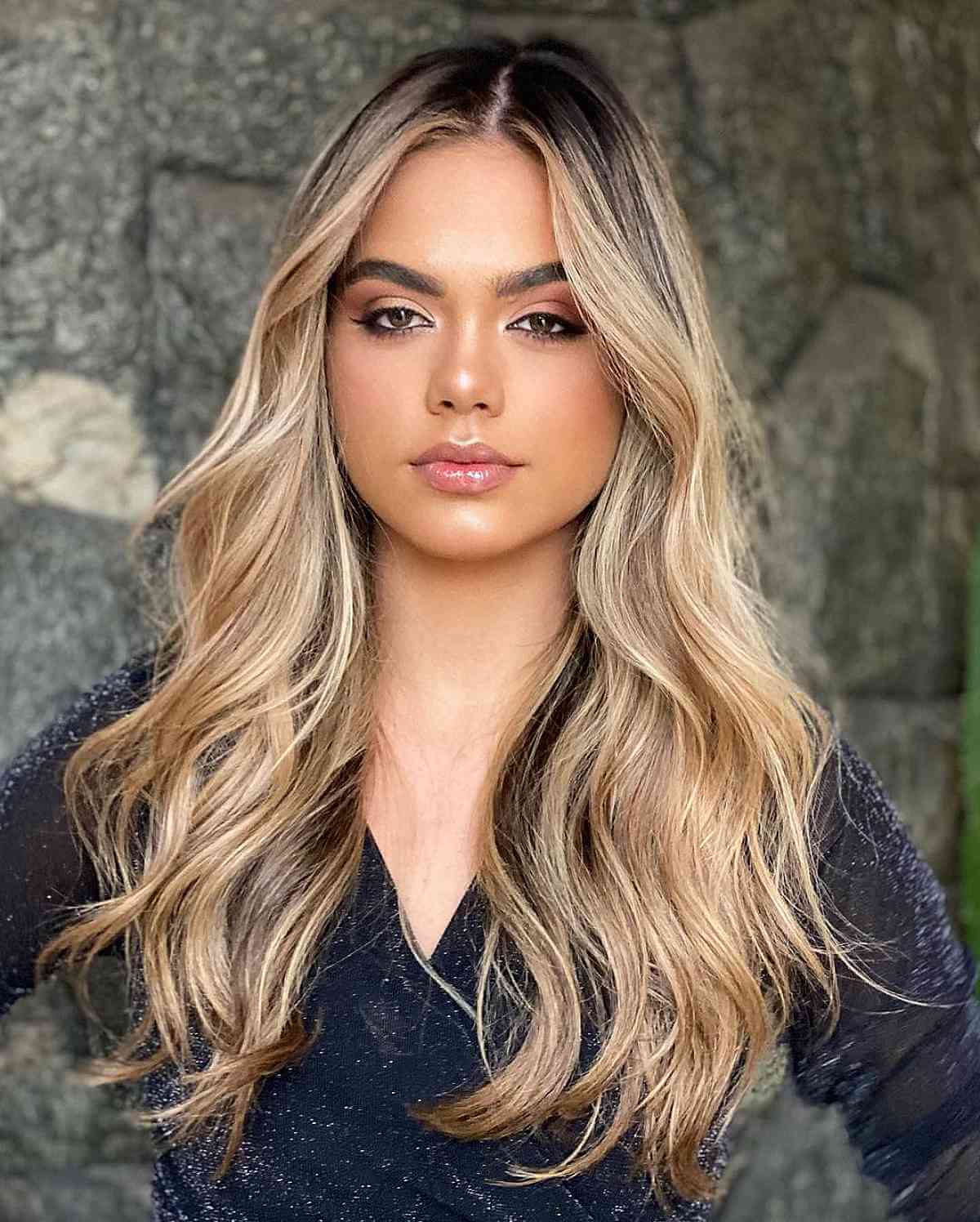
Highlighted Blunt Bob: The Lowmaintenance Haircut That Will Make You Look Effortlessly Chic 7 Jul 2023 8:18 AM (last year)
Introduction
The blunt bob is a classic haircut that has been popular for decades. It is a versatile style that can be dressed up or down, and it is flattering on a variety of face shapes. In recent years, the blunt bob has been updated with highlights, which adds dimension and interest to the style.
Highlighted blunt bobs are a great choice for women who want a low-maintenance haircut that still looks stylish. The blunt cut is easy to style, and the highlights will help to keep your hair looking fresh and vibrant.
In this blog post, we will discuss the benefits of highlighted blunt bobs, and we will provide some tips on how to style this trendy haircut.
Benefits of Highlighted Blunt Bobs
There are many benefits to choosing a highlighted blunt bob. Here are a few of the most notable:
- Low-maintenance: Highlighted blunt bobs are very easy to style. You can simply blow-dry your hair straight or add some waves with a curling iron.
- Versatile: Highlighted blunt bobs can be dressed up or down. They look great with both casual and formal outfits.
- Flattering: Highlighted blunt bobs are flattering on a variety of face shapes. They can help to elongate the face and create a more defined jawline.
- Timeless: Highlighted blunt bobs are a classic style that will never go out of fashion.
Tips for Styling Highlighted Blunt Bobs
Here are a few tips for styling highlighted blunt bobs:
- Use a good quality shampoo and conditioner to keep your hair healthy and shiny.
- Use a blow-dryer with a diffuser to create soft waves.
- Add some texture to your hair with a texturizing spray.
- Use a curling iron to create loose curls.
- Pin back some of your hair to create a half-up, half-down style.
Conclusion
Highlighted blunt bobs are a stylish and low-maintenance haircut that is flattering on a variety of face shapes. If you are looking for a new haircut that will make you look effortlessly chic, then a highlighted blunt bob is a great option.
If you're interested in learning more about this style, visit Hairstyle Glow Beauty.
FAQ of highlighted blunt bob
- What is a highlighted blunt bob?
A highlighted blunt bob is a short, straight hairstyle with blunt, even layers. The hair is typically highlighted with lighter shades to create dimension and contrast.
- What are the benefits of a highlighted blunt bob?
A highlighted blunt bob is a versatile hairstyle that can be dressed up or down. It is also relatively low-maintenance and easy to style. Additionally, the highlights can help to brighten the face and make it look more awake.
- What are the drawbacks of a highlighted blunt bob?
The blunt cut of a highlighted blunt bob can be unforgiving, so it is important to have the right hair type for this style. Additionally, the highlights can require more maintenance than solid-colored hair.
- How do I get a highlighted blunt bob?
The best way to get a highlighted blunt bob is to see a qualified hairstylist. They will be able to assess your hair type and give you a style that is flattering for your face shape.
- What are some tips for styling a highlighted blunt bob?
To style a highlighted blunt bob, you will need a blow dryer, a round brush, and some styling products. Start by blow drying your hair in the direction that you want it to fall. Then, use the round brush to create smooth, polished waves. Finish with a light-hold hairspray to hold the style in place.
- How often do I need to get my highlighted blunt bob highlighted?
The frequency with which you need to get your highlighted blunt bob highlighted will depend on the growth rate of your hair and the desired level of contrast between the highlighted and non-highlighted hair. In general, you should get your hair highlighted every 6-8 weeks.
Image of highlighted blunt bob
- Short blunt bob with balayage highlights. This is a classic and versatile look that is flattering on most face shapes. The short length is easy to style and the balayage highlights add dimension and depth.

- Long blunt bob with ombré highlights. This look is a bit more dramatic than the short blunt bob, but it is still very stylish. The long length allows you to play with different styling options, and the ombré highlights add a touch of edge.

- Blunt bob with chunky highlights. This look is a bit more retro, but it is still very popular. The chunky highlights add a lot of visual interest and make the hair look thicker.

- Blunt bob with babylights highlights. This look is a more subtle way to add highlights to a blunt bob. The babylights are very fine and blend in with the natural hair color, so they create a soft and natural-looking effect.

- Blunt bob with balayage and babylights highlights. This look combines the best of both worlds. The balayage highlights add dimension and depth, while the babylights create a soft and natural-looking effect.

- Blunt bob with natural highlights. This look is for those who want a more understated look. The natural highlights are blended in with the natural hair color, so they create a very subtle and natural-looking effect.

- Blunt bob with ash blonde highlights. This look is for those who want a cool and edgy look. The ash blonde highlights add a touch of drama and make the hair look brighter.

- Blunt bob with copper highlights. This look is for those who want a warm and vibrant look. The copper highlights add a touch of sunshine and make the hair look more dimensional.

- Blunt bob with rose gold highlights. This look is for those who want a unique and stylish look. The rose gold highlights add a touch of glamour and make the hair look more modern.

Photos Of Shag Hairstyles For Every Face Shape And Hair Type 6 Jul 2023 7:44 AM (last year)
Title: Photos of Shag Hairstyles for Every Face Shape and Hair Type
Introduction
The shag haircut is a classic style that has been around for decades. It's known for its tousled, layered look that is both edgy and feminine. In recent years, the shag has made a comeback, and it's now one of the most popular hairstyles around.
There are many different ways to style a shag, so it can be customized to flatter any face shape and hair type. In this blog post, we will take a look at some of the most popular shag hairstyles, and we will provide tips on how to choose the right style for you.
Main Content
Shag Hairstyles for Oval Faces
Oval faces are considered to be the most versatile face shape, so they can pretty much pull off any hairstyle. However, the shag is a particularly good choice for oval faces because it helps to frame the face and accentuate the cheekbones.
One popular way to style a shag for oval faces is to keep the layers long and flowing. This will help to create a sense of balance and symmetry. You can also add some soft waves or curls to add more movement to the style.
Shag Hairstyles for Round Faces
Round faces can benefit from a shag haircut that adds some angles and definition to the face. One way to do this is to keep the layers shorter around the face and longer on top. This will help to elongate the face and create a more oval shape.
You can also add some side-swept bangs to your shag. This will help to draw attention to the eyes and cheekbones.
Shag Hairstyles for Square Faces
Square faces can benefit from a shag haircut that softens the angles of the face. One way to do this is to add some long, wispy layers around the face. This will help to create a more elongated look.
You can also add some soft waves or curls to your shag. This will help to add some movement and texture to the style.
Shag Hairstyles for Long Hair
A shag haircut can also be a great way to add some length and volume to your hair. If you have long hair, you can ask your stylist to add some long, choppy layers throughout your hair. This will help to create a more voluminous and textured look.
You can also add some side-swept bangs to your shag. This will help to frame your face and add some personality to your style.
Shag Hairstyles for Short Hair
A shag haircut can also be a great way to add some edge to your short hair. If you have short hair, you can ask your stylist to add some short, choppy layers throughout your hair. This will help to create a more modern and edgy look.
You can also add some textured styling products to your hair to help define the layers. This will help to create a more lived-in and tousled look.
Conclusion
The shag haircut is a versatile and stylish hairstyle that can be customized to flatter any face shape and hair type. If you're looking for a new hairstyle that is both edgy and feminine, the shag is a great option.
Visit Hairstyle Glow Beauty for a wide variety of photos of shag hairstyles for all hair types and lengths.
FAQ of photos of shag hairstyles
- What is a shag haircut?
A shag haircut is a layered hairstyle that is characterized by its choppy ends, volume, and texture. It was originally popularized in the 1970s, but has seen a resurgence in popularity in recent years.
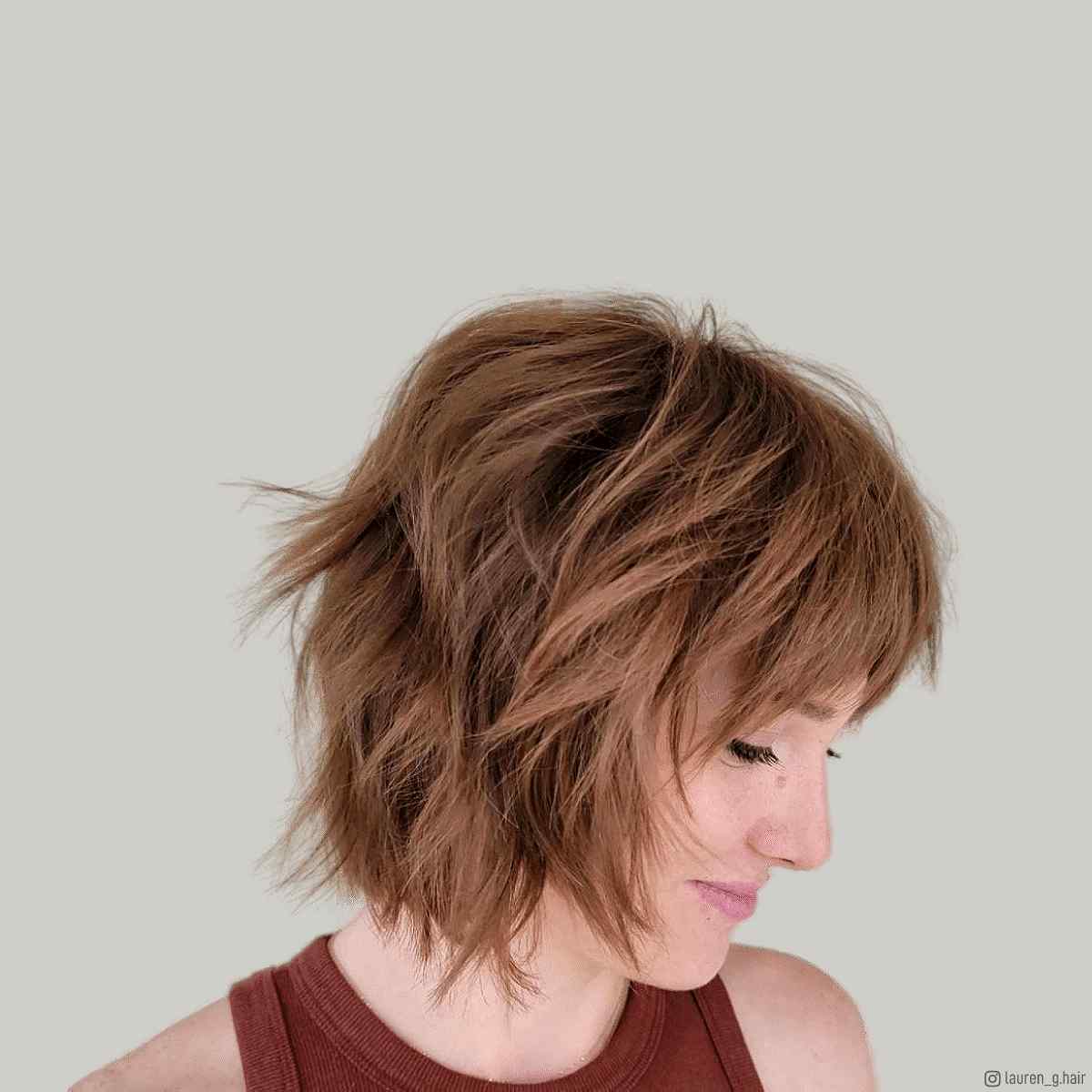
- What are the different types of shag haircuts?
There are many different variations of the shag haircut, but some of the most popular include:
* The classic shag: This is the original shag haircut, with long layers that are feathered at the ends.
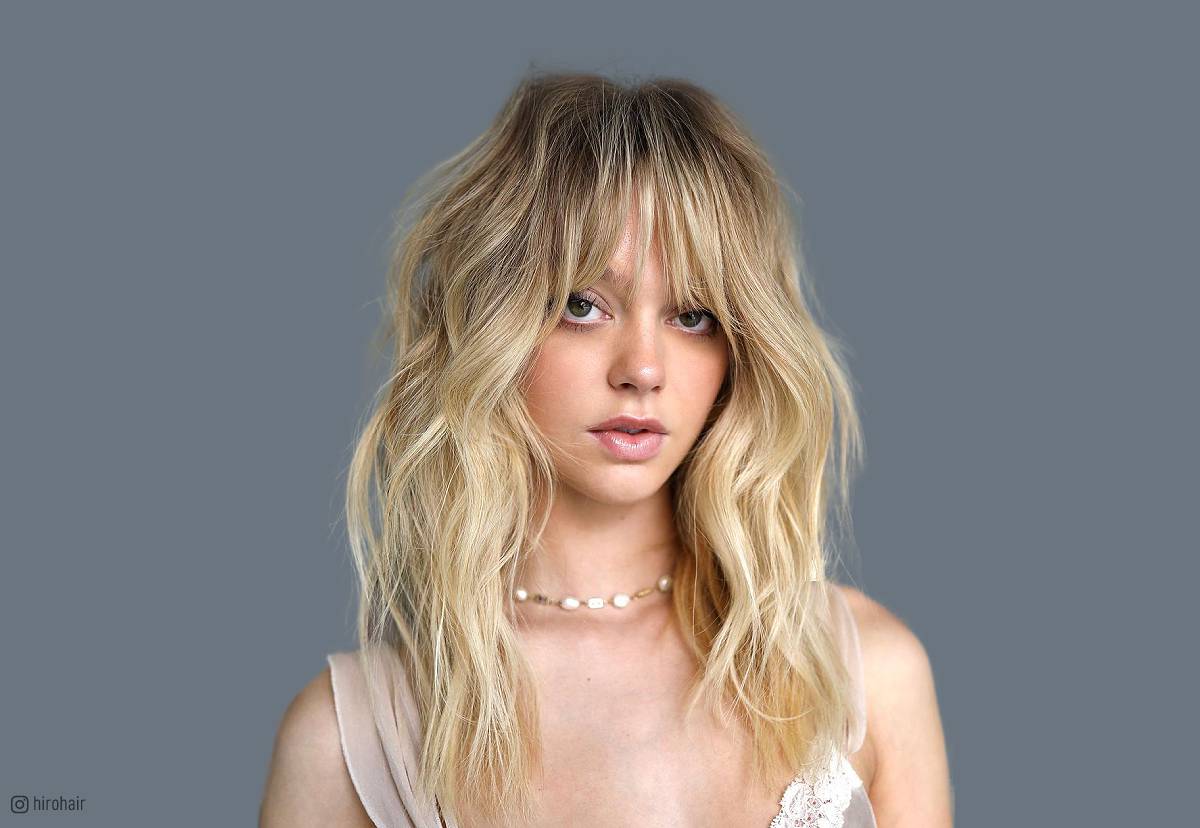 * The modern shag: This is a more updated version of the shag haircut, with shorter layers and more texture.
* The modern shag: This is a more updated version of the shag haircut, with shorter layers and more texture.
 * The shaggy mullet: This is a hybrid of the shag and mullet haircuts, with short layers in the front and sides, and longer layers in the back.
* The shaggy mullet: This is a hybrid of the shag and mullet haircuts, with short layers in the front and sides, and longer layers in the back.
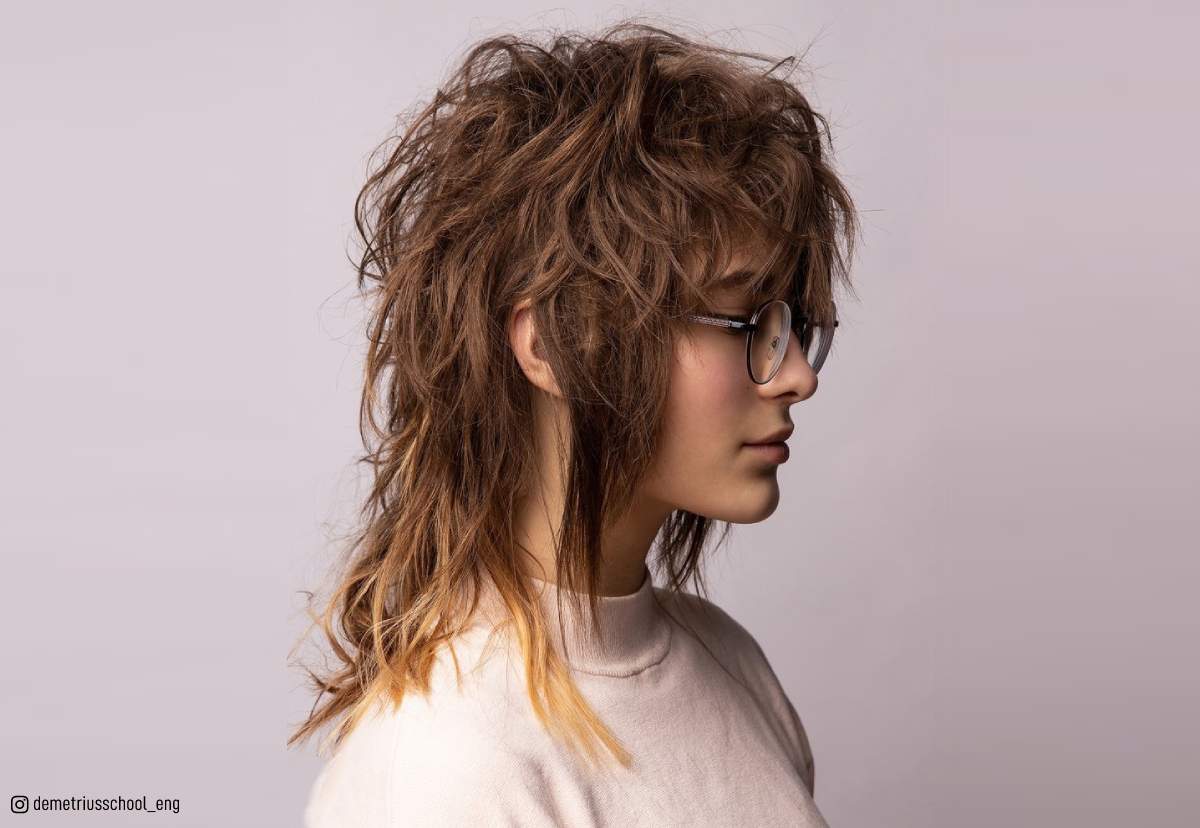
- What hair types are best for a shag haircut?
Shag haircuts can work well on most hair types, but they are particularly flattering for medium to thick hair. Fine hair can also work with a shag haircut, but it is important to add layers to create volume.
- How do I style a shag haircut?
Shag haircuts are relatively low-maintenance, but there are a few things you can do to style them:
* Use a texturizing spray or mousse to add volume and texture to your hair.
* Blow-dry your hair with a diffuser to create a tousled look.
* Use a round brush to smooth out your hair if you prefer a sleeker look.
* Finish with a light-hold hairspray to keep your style in place.
- Is a shag haircut a good choice for me?
Shag haircuts are a great choice for women who want a stylish and versatile hairstyle. They are also a good choice for women who have medium to thick hair, as they can help to add volume and texture. If you are looking for a low-maintenance hairstyle, a shag haircut is a great option.
Image of photos of shag hairstyles
10 different images of photos of shag hairstyles that are free to use:
- Long shag with curtain bangs. This is a classic shag hairstyle that is flattering on all face shapes. The long layers and curtain bangs add movement and volume to the hair.

- Medium shag with blunt bangs. This shag hairstyle is a bit more edgy than the long shag, with blunt bangs that add a touch of drama. The medium layers add dimension and texture to the hair.

- Short shag with wispy bangs. This short shag hairstyle is a great choice for those who want a low-maintenance style. The wispy bangs frame the face and add a touch of softness.
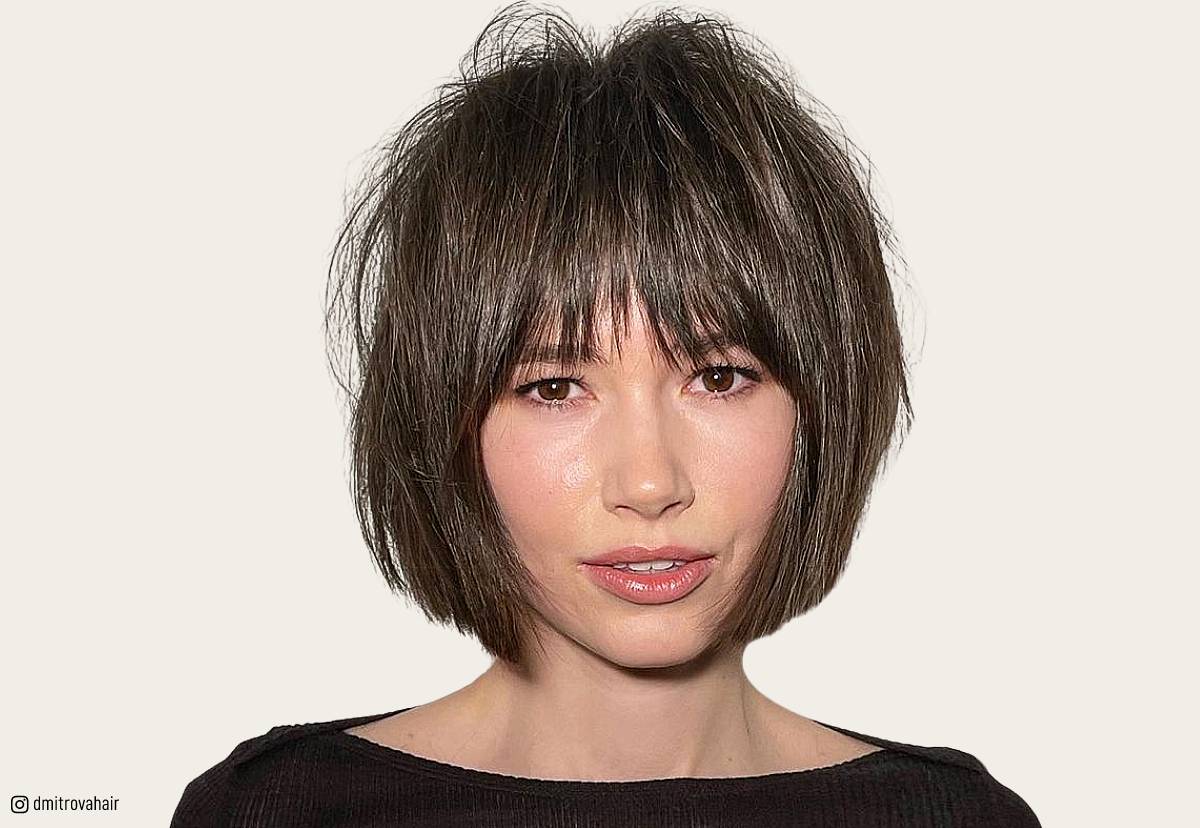
- Asymmetrical shag with side-swept bangs. This asymmetrical shag hairstyle is a unique and stylish option. The side-swept bangs add a touch of asymmetry to the style.

- Curly shag hairstyle. This curly shag hairstyle is a great way to show off your natural curls. The layers and texture of the shag style will help to define your curls.
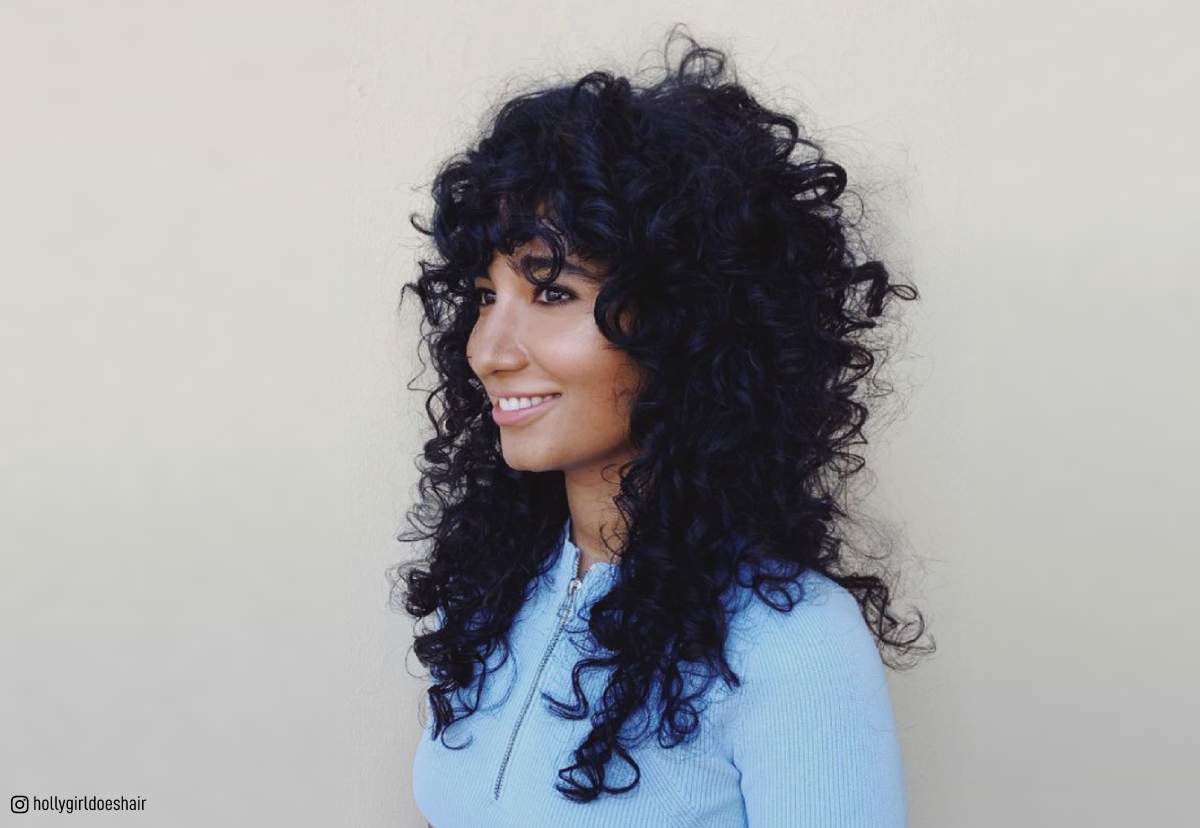
- Wavy shag hairstyle. This wavy shag hairstyle is a versatile style that can be dressed up or down. The layers and texture of the shag style will help to add volume and movement to your waves.

- Blunt shag hairstyle. This blunt shag hairstyle is a bold and edgy option. The blunt layers add a touch of drama to the style.

- Messy shag hairstyle. This messy shag hairstyle is a great way to add some texture and personality to your hair. The messy layers will help to create a relaxed and carefree look.

- Layered shag hairstyle. This layered shag hairstyle is a classic and versatile style. The layers add dimension and volume to the hair, and the style can be dressed up or down.

- Cropped shag hairstyle. This cropped shag hairstyle is a great choice for those who want a short and edgy style. The cropped layers add a touch of personality to the style.

I hope you like these images!
Lowes Cow Manure: The Secret To Growing Amazing Gardens 5 Jul 2023 3:38 AM (last year)
Title: Lowes Cow Manure: The Secret to Growing Amazing Gardens
Introduction:
If you're looking for a way to boost your garden's productivity, look no further than cow manure. This natural fertilizer is packed with nutrients that will help your plants grow strong and healthy. Lowes carries a variety of cow manure products, so you can find the perfect one for your needs.
In this blog post, we'll discuss the benefits of using cow manure in your garden, how to choose the right product, and how to apply it properly. We'll also share some tips for using cow manure safely.
Main Content:
Benefits of using cow manure:
- Cow manure is a natural fertilizer that is rich in nutrients, including nitrogen, phosphorus, and potassium. These nutrients are essential for plant growth.
- Cow manure also contains beneficial bacteria that help to improve soil structure and drainage. This can help to reduce the risk of root rot and other diseases.
- Cow manure is a slow-release fertilizer, which means that it releases nutrients into the soil over time. This helps to prevent nutrient burn, which can damage plants.
How to choose the right cow manure product:
When choosing a cow manure product, there are a few things to keep in mind:
- Freshness: Fresh cow manure is more potent than aged manure. If you're using fresh manure, be sure to compost it before applying it to your garden.
- Texture: Cow manure comes in a variety of textures, from fine to coarse. Fine manure is easier to spread, but it may not be as effective as coarse manure.
- Odor: Cow manure can have a strong odor. If you're sensitive to smells, you may want to choose a product that has been composted or treated with a neutralizer.
How to apply cow manure:
- Spread the manure evenly over the soil.
- Work the manure into the soil with a shovel or garden fork.
- Water the area thoroughly.
Tips for using cow manure safely:
- Avoid using fresh manure on vegetable gardens. Fresh manure can contain harmful bacteria that can contaminate food.
- Be sure to compost manure before applying it to your garden. This will help to reduce the risk of nutrient burn.
- Do not apply manure too close to plants. Manure can burn plant roots if it is applied too close.
Conclusion:
Cow manure is a great way to boost your garden's productivity. It is rich in nutrients, helps to improve soil structure, and releases nutrients slowly over time. When choosing a cow manure product, be sure to consider the freshness, texture, and odor. And be sure to apply the manure properly to avoid burning your plants.
If you are interested in learning more about Lowes cow manure, I recommend visiting Garden Wiki. This website provides detailed information about the product, including its benefits, uses, and application instructions. You can also find reviews from other customers who have used the product.
FAQ of lowes cow manure
- How old does cow manure need to be before I can use it in my garden?
Cow manure should be aged for at least 4 to 5 months before it is safe to use in your garden. This is because fresh manure can contain harmful bacteria and parasites. When manure is aged, these harmful organisms have time to die off.
- How do I apply cow manure to my garden?
The best way to apply cow manure to your garden is to work it into the soil at least 6 weeks before you plant your seeds or seedlings. This will give the manure time to break down and release its nutrients into the soil.
- How much cow manure should I use in my garden?
The amount of cow manure you need to use in your garden will depend on the size of your garden and the type of plants you are growing. As a general rule, you should use about 2 to 3 cubic feet of cow manure per 100 square feet of garden space.
- What are the benefits of using cow manure in my garden?
Cow manure is a great source of nitrogen, phosphorus, and potassium, which are essential nutrients for plant growth. It also helps to improve the drainage and water retention of soil.
- Are there any risks associated with using cow manure in my garden?
There are a few risks associated with using cow manure in your garden. Fresh manure can contain harmful bacteria and parasites, so it is important to age it for at least 4 to 5 months before using it. Cow manure can also be high in salt content, so it is important to test your soil before applying it.
Image of lowes cow manure
- A pile of fresh cow manure, with a few pieces of straw mixed in.

- A close-up of a piece of cow manure, showing the brown, crumbly texture.

- A bag of cow manure fertilizer, with the Lowes logo on the front.

- A shovelful of cow manure being spread on a garden bed.

- A plant growing in a pot, that has been fertilized with cow manure.
- A group of cows grazing in a field, with their manure visible on the ground.

- A cow manure compost pile, with worms and other insects working to break it down.
- A worm farm, which uses cow manure to feed the worms and produce worm castings, a valuable fertilizer.
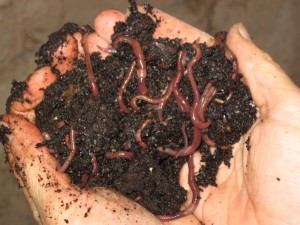
- A sign at a farm, advertising cow manure for sale.
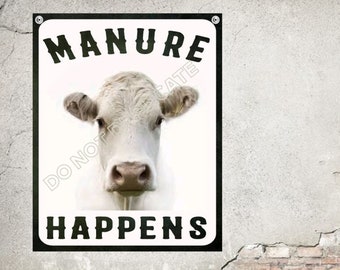
- A customer at a garden center, buying a bag of cow manure fertilizer.

Best Late Summer Blooming Perennials For Your Garden 2 Jul 2023 6:47 AM (last year)
Title: Best Late Summer Blooming Perennials for Your Garden
Introduction:
As summer winds down, you may be looking for ways to keep your garden looking colorful and vibrant. Late summer blooming perennials are a great option, as they can provide months of color and interest. In this blog post, we will discuss some of the best late summer blooming perennials, as well as tips on how to care for them.
Main Content:
Here are some of the best late summer blooming perennials:
- Asters: Asters are a classic late summer flower, and they come in a wide variety of colors, including purple, pink, white, and blue. They are easy to grow and care for, and they can tolerate a variety of soil conditions.
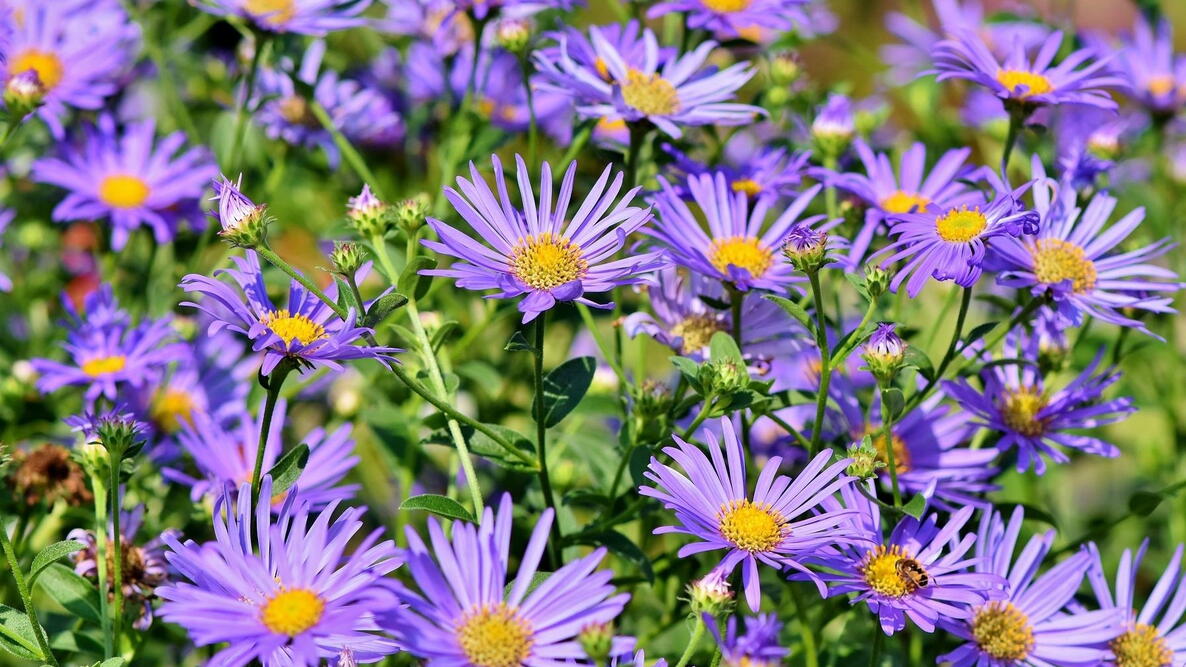
- Chrysanthemums: Chrysanthemums, also known as mums, are another popular late summer flower. They come in a wide range of colors and sizes, and they can be grown in a variety of settings. Chrysanthemums are relatively easy to care for, but they do require full sun and well-drained soil.
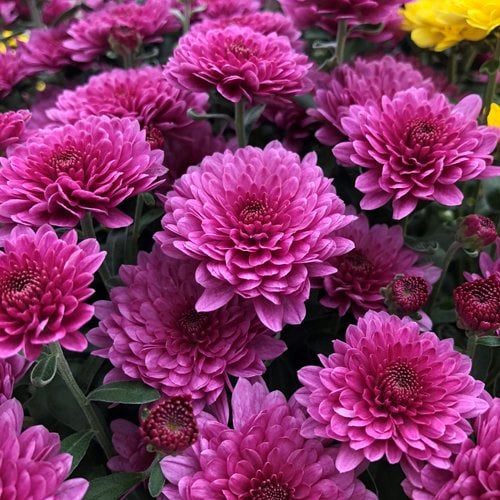
- Echinacea: Echinacea, also known as purple coneflower, is a native North American plant that is known for its medicinal properties. It is also a beautiful late summer flower, with bright purple petals and a spiky center. Echinacea is easy to grow and care for, and it can tolerate a variety of soil conditions.
- Helenium: Helenium, also known as sneezeweed, is a North American native plant that is known for its bright yellow flowers. It is a relatively tall plant, and it can grow up to 6 feet tall. Helenium is easy to grow and care for, and it can tolerate a variety of soil conditions.
- Japanese Anemone: Japanese anemones are delicate, daisy-like flowers that bloom in late summer and early fall. They come in a variety of colors, including white, pink, purple, and red. Japanese anemones are relatively easy to grow and care for, but they do prefer full sun and well-drained soil.
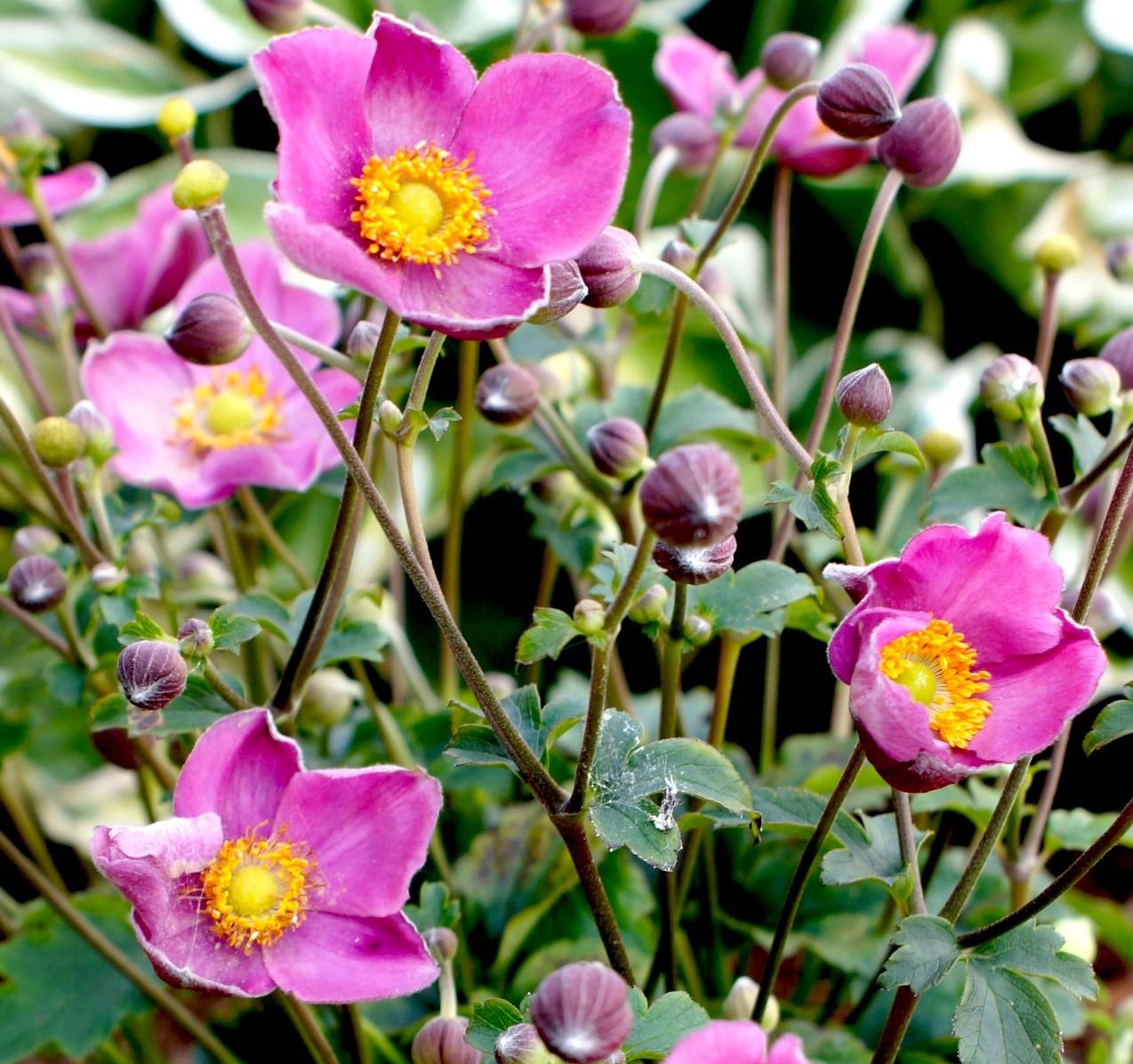
- Penstemon: Penstemon is a genus of flowering plants that includes over 250 species. They are native to North America, and they come in a wide variety of colors, including blue, pink, purple, and white. Penstemon are relatively easy to grow and care for, and they prefer full sun and well-drained soil.
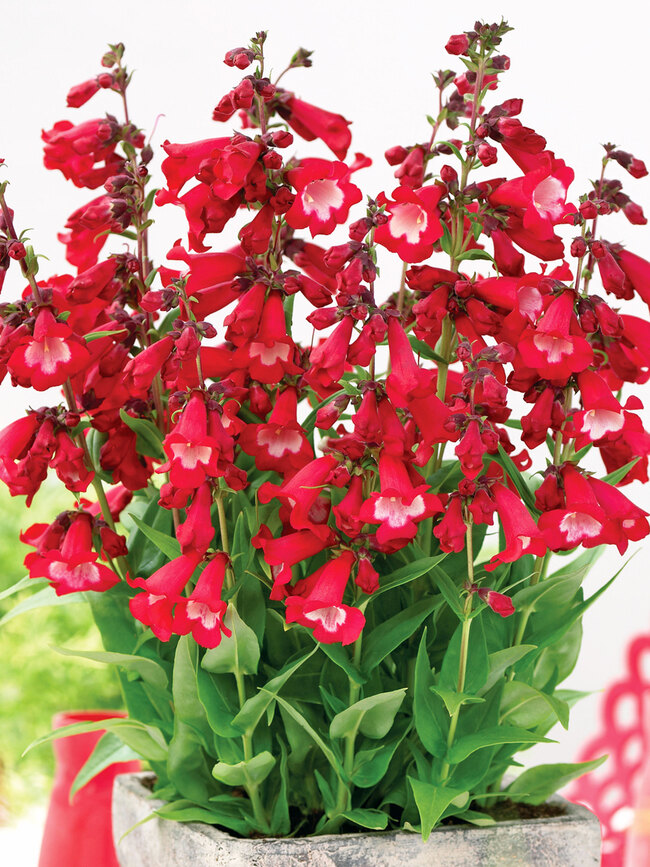
Conclusion:
These are just a few of the many great late summer blooming perennials. With so many options to choose from, you are sure to find the perfect plants to add color and interest to your garden.
Here are some tips on how to care for late summer blooming perennials:
- Plant them in full sun or partial shade.
- Water them regularly, especially during hot, dry weather.
- Fertilize them once a month with a balanced fertilizer.
- Deadhead spent flowers to encourage more blooms.
- Divide them every few years to keep them healthy and vigorous.
With a little care, your late summer blooming perennials will provide you with months of beautiful color.
Are you looking for late summer blooming perennials to add color and interest to your garden? Visit Home Gardening to learn about a wide variety of perennials that bloom from late summer to fall. You'll find information on everything from plant hardiness to preferred growing conditions, so you can choose the perfect perennials for your landscape.
In addition to providing detailed information on individual plants, Home Gardening also offers helpful articles and gardening tips. Whether you're a beginner or an experienced gardener, you'll find everything you need to know to successfully grow late summer blooming perennials.
So what are you waiting for? Visit Home Gardening today and start planning your late summer garden!
FAQ of late summer blooming perennials
- What are some late summer blooming perennials?
Some popular late summer blooming perennials include:
* Coneflower (Echinacea)
* Aster (Aster)
* Mum (Chrysanthemum)
* Russian sage (Perovskia)
* Cimicifuga (Actaea)
* Sedum (Sedum)
* Rudbeckia (Rudbeckia)
* Phlox (Phlox)
* Echinacea purpurea
* Liatris spicata
* Solidago rugosa
- Where should I plant late summer blooming perennials?
Late summer blooming perennials should be planted in full sun or partial shade. They prefer well-drained soil, but can tolerate some drought conditions.
- How do I care for late summer blooming perennials?
Late summer blooming perennials need regular watering, especially during the summer months. They should also be fertilized once a year in the spring. In the fall, you can deadhead the spent flowers to encourage new growth.
- How long do late summer blooming perennials live?
Most late summer blooming perennials are long-lived, and can last for many years with proper care.
- What are some tips for extending the bloom time of late summer blooming perennials?
Here are a few tips for extending the bloom time of late summer blooming perennials:
* Deadhead spent flowers regularly.
* Fertilize your plants in the spring and fall.
* Water your plants regularly, especially during hot, dry weather.
* Provide your plants with full sun or partial shade.
* Amend your soil with compost or other organic matter to improve drainage and fertility.
- What are some companion plants for late summer blooming perennials?
Here are a few companion plants that can be planted with late summer blooming perennials:
* Yarrow (Achillea millefolium)
* Daylily (Hemerocallis)
* Bee balm (Monarda didyma)
* Black-eyed Susan (Rudbeckia hirta)
* Coneflower (Echinacea purpurea)
* Aster (Aster)
* Liatris (Liatris spicata)
* Solidago (Solidago rugosa)
- What are some pests and diseases that can affect late summer blooming perennials?
Late summer blooming perennials can be susceptible to a variety of pests and diseases, including:
* Aphids
* Spider mites
* Whiteflies
* Leaf spot
* Rust
* Powdery mildew
If you notice any pests or diseases on your late summer blooming perennials, it is important to treat them promptly. You can use insecticidal soap, neem oil, or horticultural oil to control pests. For diseases, you may need to use a fungicide.
Image of late summer blooming perennials
- Coneflower (Echinacea purpurea) is a tall, hardy perennial with daisy-like flowers that bloom in shades of purple, pink, and white. It is native to North America and is known for its medicinal properties.
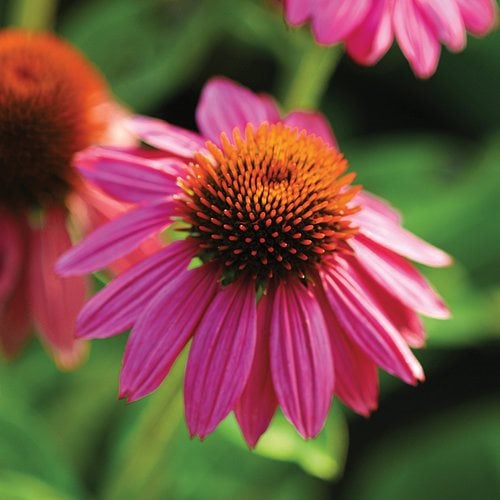
- Aster (Aster novae-angliae) is a late summer bloomer with daisy-like flowers that come in a variety of colors, including purple, pink, white, and blue. It is native to North America and is a popular choice for butterfly gardens.

- Mum (Chrysanthemum) is a popular fall bloomer, but there are also varieties that bloom in late summer. Mums come in a wide range of colors and sizes, and they are easy to grow.

- Russian sage (Perovskia atriplicifolia) is a tall, airy perennial with blue flowers that bloom in late summer and fall. It is drought-tolerant and deer-resistant, making it a good choice for low-maintenance gardens.
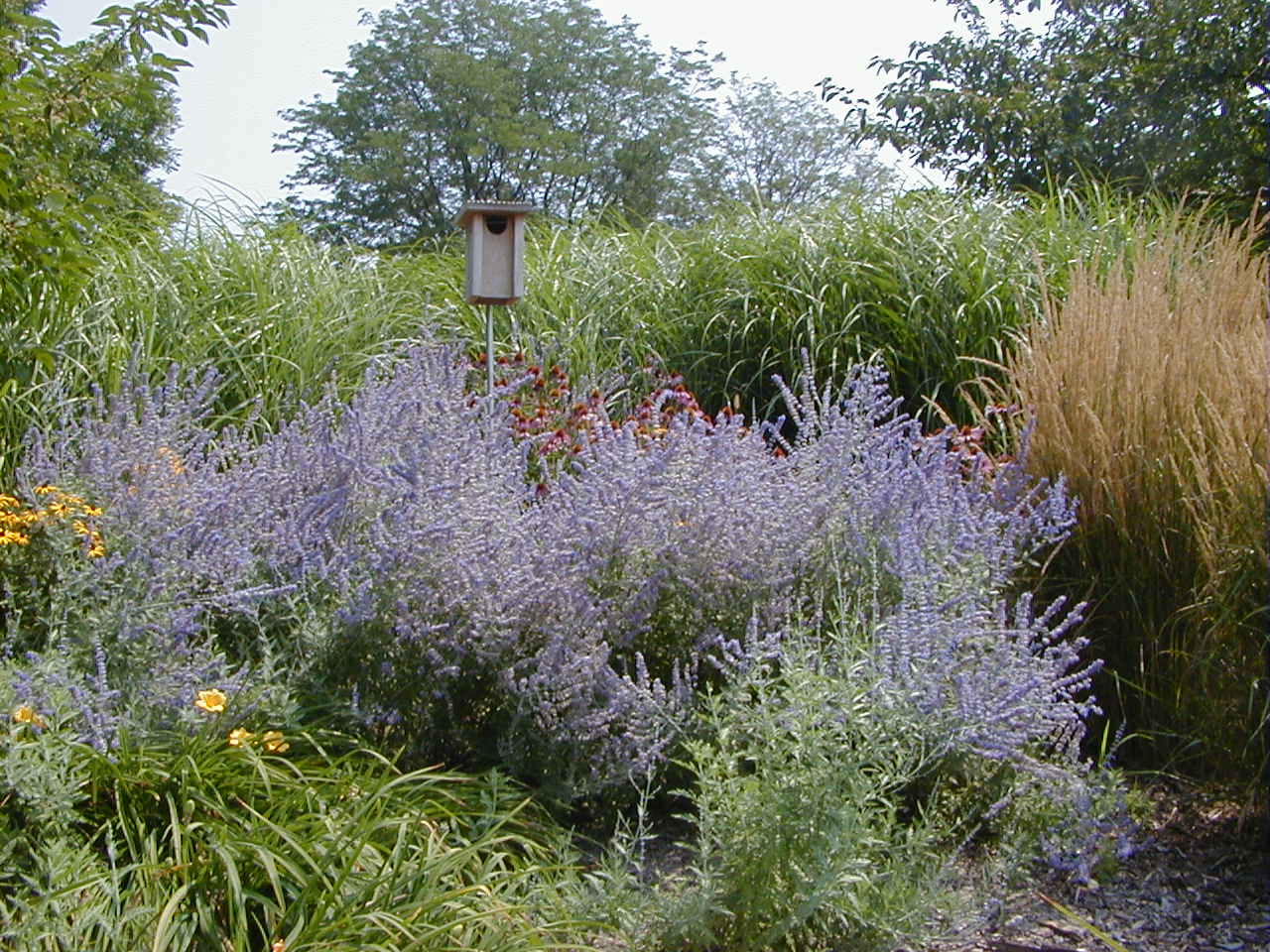
- Cimifuga (Actaea) is a group of late summer blooming perennials with delicate white flowers. They are known for their medicinal properties and are often used to treat anxiety and insomnia.
- Sedum is a genus of succulent plants that come in a variety of colors and sizes. Many sedums bloom in late summer and fall, and they are a popular choice for rock gardens and xeriscapes.

- Rudbeckia (Rudbeckia hirta) is a tall, daisy-like perennial with yellow flowers that bloom in late summer. It is native to North America and is a popular choice for wildflower gardens.

- Phlox (Phlox paniculata) is a tall, summer-blooming perennial with clusters of pink, purple, or white flowers. It is a popular choice for borders and cut flowers.
- Goldenrod (Solidago) is a tall, late summer bloomer with yellow flowers. It is native to North America and is a good choice for attracting pollinators.
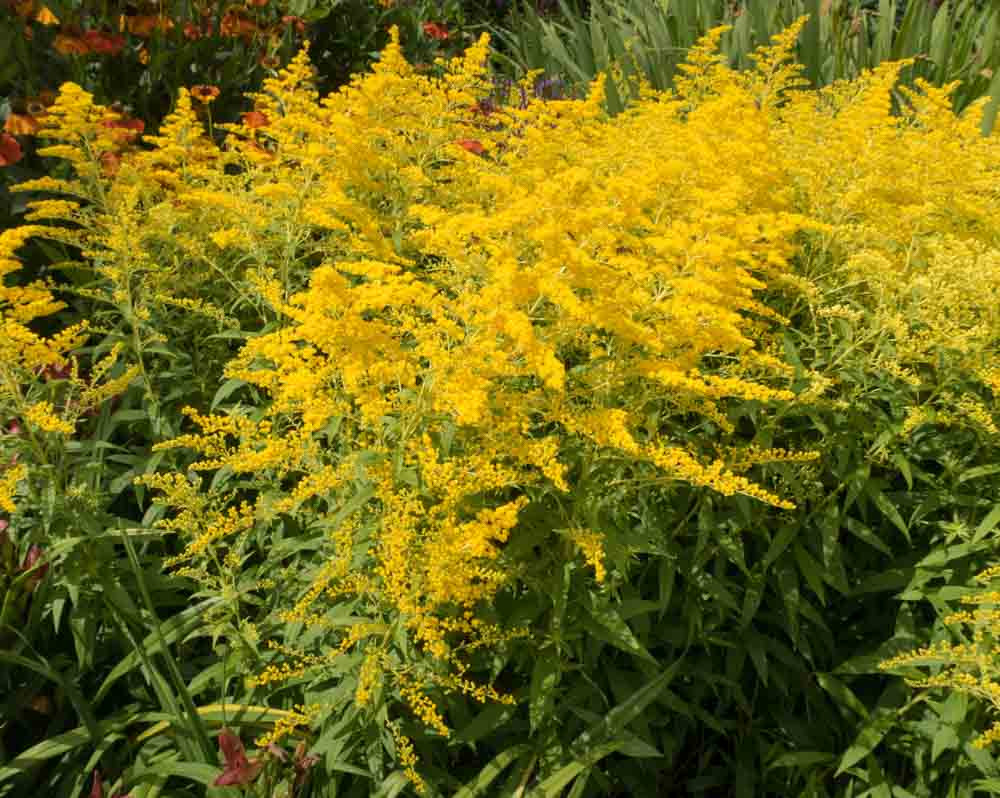
- Astilbe (Astilbe chinensis) is a tall, airy perennial with delicate pink or white flowers. It is a popular choice for shade gardens.
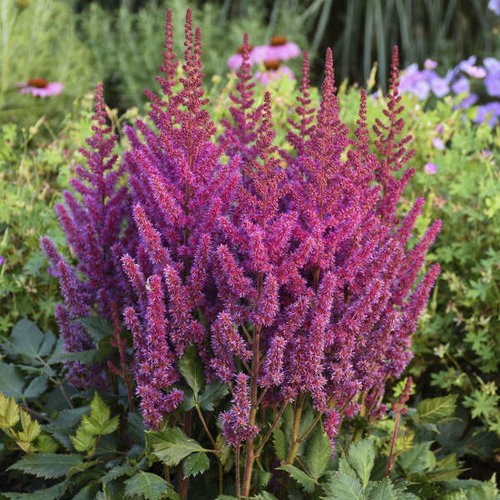
Bad Companion Plants For Mint That Will 1 Jul 2023 5:53 AM (last year)
Mint is a popular herb that is known for its refreshing taste and aromatic qualities. It can be used in a variety of dishes, as well as in teas and other beverages. Mint is also a relatively easy plant to grow, but it is important to be aware of its companion plants. Some plants do not do well when planted near mint, and can even be harmful to its growth.
In this blog post, we will discuss some of the bad companion plants for mint. We will also provide some tips on how to plant mint so that it can thrive.
What are Bad Companion Plants for Mint?
There are a few plants that should not be planted near mint. These plants include:
- Basil: Basil and mint are both Mediterranean herbs, but they have different water and nutrient requirements. Basil prefers drier soil, while mint prefers moist soil. If planted too close together, basil can stunt the growth of mint.

- Lavender: Lavender and mint have similar water requirements, but they have different pH preferences. Lavender prefers slightly alkaline soil, while mint prefers slightly acidic soil. If planted too close together, lavender can make the soil too alkaline for mint, which can stunt its growth.

- Rosemary: Rosemary and mint have similar water requirements, but they have different sun exposure requirements. Rosemary prefers full sun, while mint can tolerate partial shade. If planted too close together, rosemary can shade out mint, which can stunt its growth.
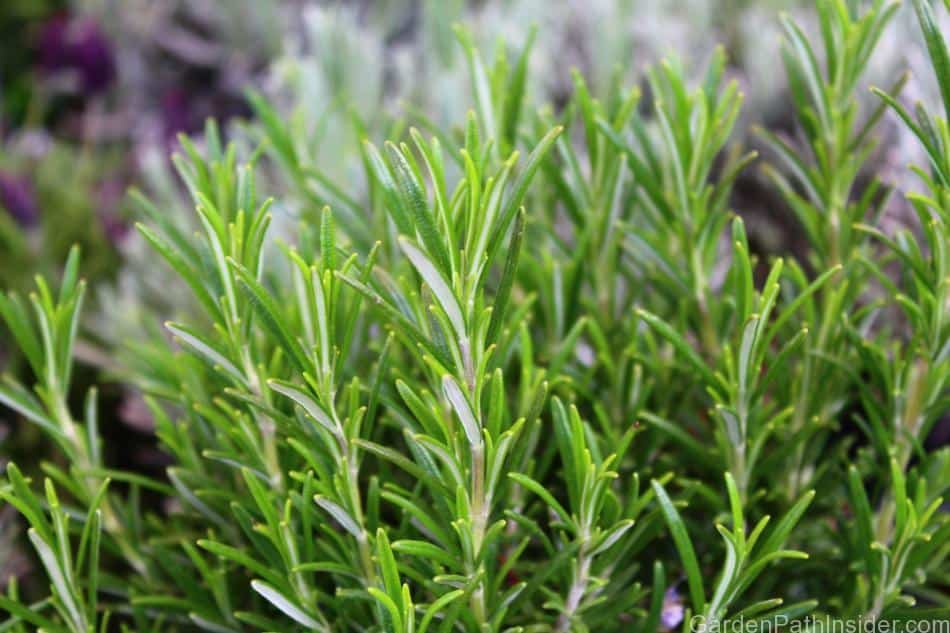
- Sage: Sage and mint have similar water requirements, but they have different soil preferences. Sage prefers well-drained soil, while mint prefers moist soil. If planted too close together, sage can make the soil too dry for mint, which can stunt its growth.
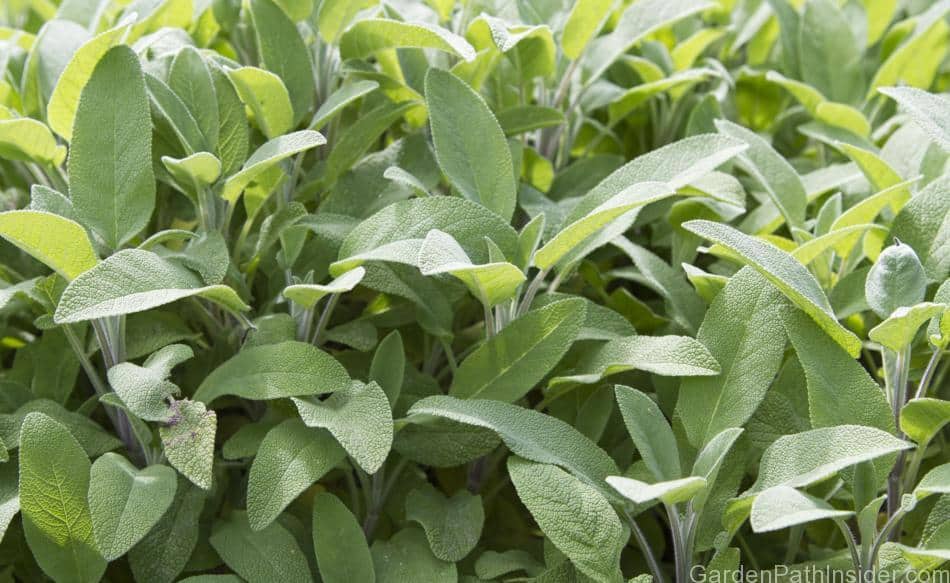
- Thyme: Thyme and mint have similar water requirements, but they have different sun exposure requirements. Thyme prefers full sun, while mint can tolerate partial shade. If planted too close together, thyme can shade out mint, which can stunt its growth.
- Chamomile: Chamomile and mint have similar water requirements, but they have different soil preferences. Chamomile prefers alkaline soil, while mint prefers acidic soil. If planted too close together, chamomile can make the soil too alkaline for mint, which can stunt its growth.

- Parsley: Parsley and mint have similar water requirements, but they have different growth habits. Parsley is a biennial plant, meaning it grows for two years before dying. Mint is a perennial plant, meaning it can live for many years. If planted too close together, parsley can be overwhelmed by the growth of mint.
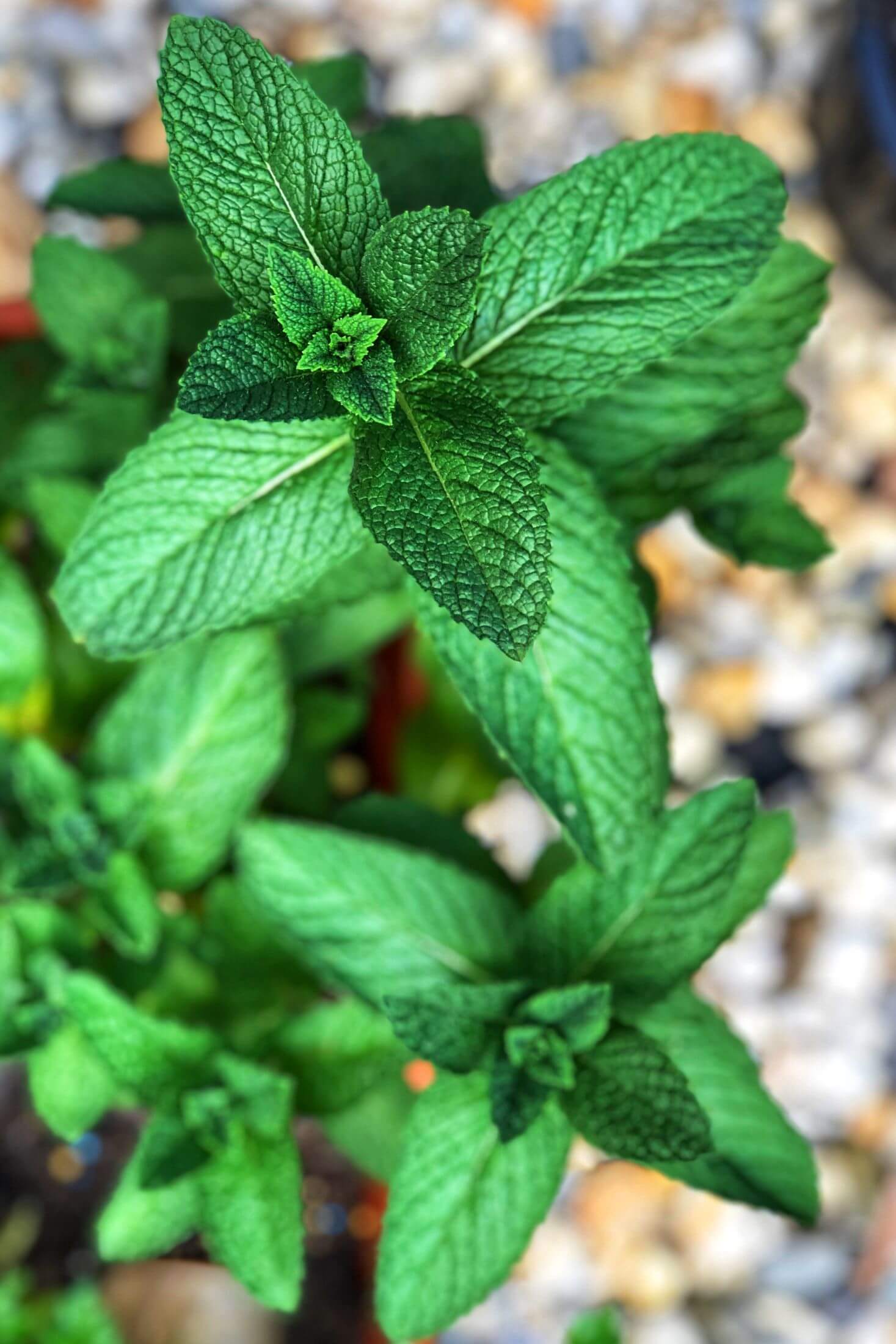
How to Plant Mint
If you want to plant mint, it is important to choose a location that is well-drained and receives partial shade. Mint can tolerate full sun, but it will grow better in partial shade. The soil should be moist but not soggy.
When planting mint, dig a hole that is twice as wide as the root ball of the plant. Add some compost or manure to the soil to improve drainage and fertility. Place the plant in the hole and backfill with soil. Water the plant well.
Once the plant is established, you can water it as needed. Mint is a drought-tolerant plant, but it will appreciate regular watering during hot, dry weather.
To prevent mint from spreading too much, you can plant it in a container. A large pot or planter is best. Make sure the pot has drainage holes to prevent the soil from becoming soggy.
Conclusion
Mint is a beautiful and fragrant herb that can add a lot of flavor to your dishes. However, it is important to be aware of its companion plants. Some plants do not do well when planted near mint, and can even be harmful to its growth.
If you are planning to plant mint, be sure to choose a location that is well-drained and receives partial shade. You can also plant mint in a container to prevent it from spreading too much.
By following these tips, you can enjoy the benefits of mint without having to worry about it harming your other plants.
Mint is a versatile herb that can be used in a variety of dishes, but it's important to know which plants it should be paired with. Some companion plants can actually help to improve the growth and flavor of mint, while others can stunt its growth or even kill it.
If you're planning on planting mint in your garden, it's important to avoid planting it near any of the following plants:
- Lavender
- Rosemary
- Sage
- Oregano
- Thyme
- Basil
- Chamomile
- Parsley
- Strawberries
These plants are all competing with mint for the same resources, such as water and nutrients. As a result, planting them together can lead to stunted growth and even death.
If you're looking for companion plants that will help mint to thrive, you'll want to consider planting it near the following:
- Carrots
- Cabbage
- Collard greens
- Marigolds
- Tomatoes
These plants can help to deter pests and diseases that can damage mint plants.
For more information about bad companion plants for mint, please visit Garden Wiki.
FAQ of bad companion plants for mint
What are some bad companion plants for mint?
Mint is a very invasive plant, and its roots can quickly spread and crowd out other plants. Some of the worst companion plants for mint include:
- Basil: Basil and mint are both Mediterranean herbs, but they have different water and nutrient requirements. Basil prefers drier soil and more sunlight, while mint prefers moist soil and partial shade. Planting them together can stress both plants and make them more susceptible to pests and diseases.
- Lavender: Lavender and mint have similar water and nutrient requirements, but their roots can compete for space. This can lead to stunted growth and even death for one or both plants.
- Rosemary: Rosemary and mint have different water and nutrient requirements, and their roots can also compete for space. Planting them together can stress both plants and make them more susceptible to pests and diseases.
- Sage: Sage and mint have similar water and nutrient requirements, but their roots can compete for space. This can lead to stunted growth and even death for one or both plants.
- Thyme: Thyme and mint have similar water and nutrient requirements, but their roots can compete for space. Planting them together can stress both plants and make them more susceptible to pests and diseases.
What happens if I plant mint next to these plants?
If you plant mint next to any of these plants, it is likely that the mint will eventually outgrow and crowd out the other plant. This can lead to stunted growth, wilting, and even death for the other plant. In some cases, the mint may even release chemicals that can inhibit the growth of the other plant.
How can I prevent mint from overtaking my garden?
There are a few things you can do to prevent mint from overtaking your garden:
- Plant mint in a pot: This is the best way to contain the mint's growth. Make sure the pot is large enough for the mint to spread out, but not so large that it will outgrow the pot.
- Divide the mint every year: Mint plants can quickly become overcrowded. To prevent this, divide the plant every year in the spring or fall. This will help to keep the plant healthy and vigorous.
- Use a barrier: If you must plant mint in the ground, you can use a barrier to prevent it from spreading. A barrier can be made of plastic, metal, or even cardboard.
- Keep an eye on the mint: Even if you take precautions, it is still important to keep an eye on the mint. If you see it starting to spread, take action immediately to contain it.
What are some good companion plants for mint?
There are a few plants that can tolerate mint's invasive nature and actually benefit from being planted nearby. Some of these good companion plants for mint include:
- Carrots: Mint can help to deter carrot flies and other pests.
- Tomatoes: Mint can help to improve the flavor of tomatoes.
- Broccoli: Mint can help to repel cabbage moths and other pests.
- Cucumbers: Mint can help to deter cucumber beetles and other pests.
- Lettuce: Mint can help to repel aphids and other pests.
Image of bad companion plants for mint
- Oregano. Mint and oregano are both strong-flavored herbs that can compete with each other for water and nutrients. Planting them together can stunt their growth and make them less flavorful.
- Rosemary. Like oregano, rosemary is another herb that can be aggressive and take over a garden. Planting it near mint can crowd out the mint and prevent it from thriving.
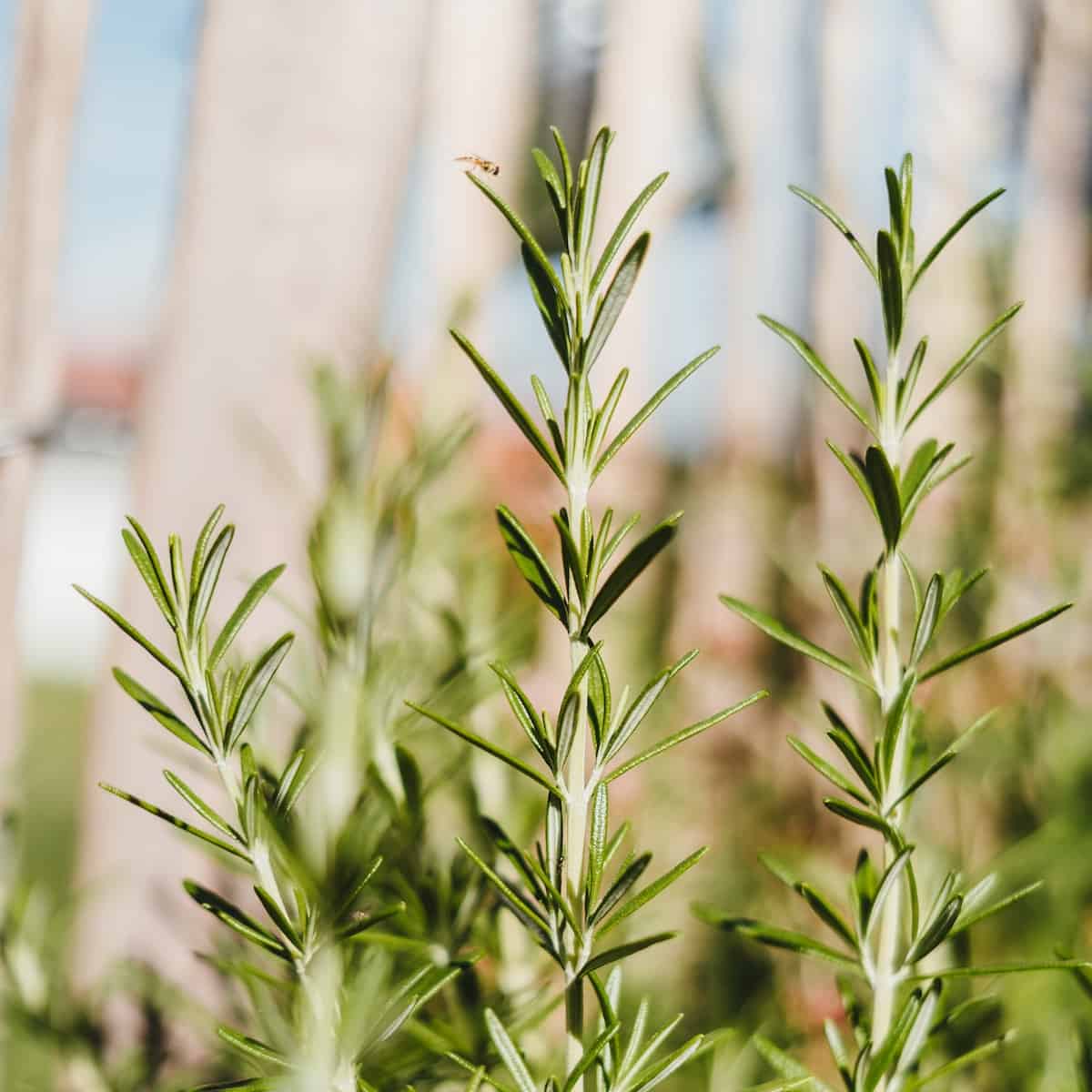
- Basil. Basil and mint are both members of the mint family, so they can compete with each other for resources. Planting them together can weaken both plants and make them more susceptible to pests and diseases.
- Lavender. Lavender and mint have different water needs, so planting them together can lead to one plant getting too much water and the other getting too little. This can stress both plants and make them more susceptible to problems.
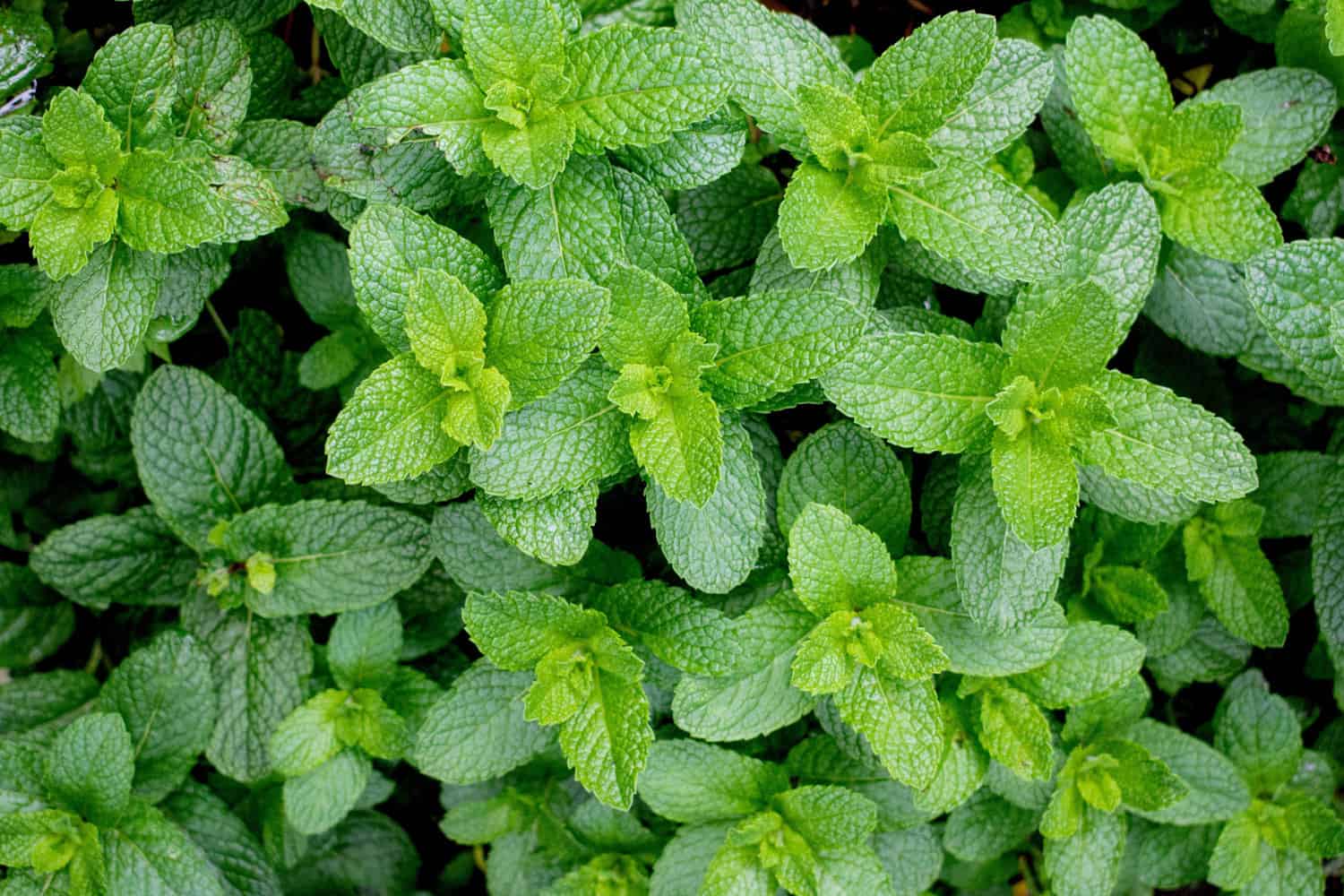
- Sage. Sage and mint have similar growth habits, so planting them together can lead to them crowding each other out. This can stunt their growth and make them less productive.

The Annabelle Hydrangea: The Showstopper Shrub That's Easy To Grow 30 Jun 2023 7:55 AM (last year)
The Annabelle Hydrangea: The Showstopper Shrub That's Easy to Grow
Annabelle hydrangeas are one of the most popular shrubs in the world, and for good reason. They are known for their large, round heads of creamy white blooms that can reach up to 12 inches in diameter. Annabelle hydrangeas are also relatively easy to grow, making them a great choice for even beginner gardeners.
In this blog post, we will take a closer look at Annabelle hydrangeas. We will discuss their care requirements, their hardiness, and how to propagate them. We will also share some tips on how to get the most out of your Annabelle hydrangeas.
So, if you are thinking about adding an Annabelle hydrangea to your garden, read on for all the information you need to know.
## What is an Annabelle hydrangea?
Annabelle hydrangeas are a type of deciduous shrub that is native to North America. They are members of the Hydrangea genus, which includes over 70 species of shrubs and trees. Annabelle hydrangeas are prized for their large, showy blooms, which typically appear in late spring or early summer. The blooms can last for several weeks, and they can range in color from creamy white to pale pink.
## Annabelle hydrangea care
Annabelle hydrangeas are relatively easy to care for. They prefer full sun to partial shade and moist, well-drained soil. Annabelle hydrangeas are not drought tolerant, so they will need to be watered regularly, especially during hot, dry weather.
Annabelle hydrangeas are not particularly susceptible to pests or diseases. However, they may be affected by powdery mildew, which can cause white spots to appear on the leaves. If you see powdery mildew on your Annabelle hydrangea, you can treat it with a fungicide.
## Annabelle hydrangea hardiness
Annabelle hydrangeas are hardy in USDA zones 3-9. This means that they can withstand cold winters and hot summers. However, Annabelle hydrangeas may not bloom as well in very cold winters or very hot summers.
## Annabelle hydrangea propagation
Annabelle hydrangeas can be propagated by taking cuttings in the spring or fall. To take a cutting, simply cut a 4-6 inch section of stem from a healthy plant. Remove the leaves from the bottom half of the cutting, and then dip the cutting in rooting hormone. Plant the cutting in a pot of moist potting mix, and place the pot in a shady spot. Keep the potting mix moist, and the cutting should root in a few weeks.
## Tips for getting the most out of your Annabelle hydrangeas
- Fertilize your Annabelle hydrangeas in the spring with a balanced fertilizer.
- Water your Annabelle hydrangeas regularly, especially during hot, dry weather.
- Deadhead spent blooms to encourage new growth.
- Protect your Annabelle hydrangeas from frost in the winter.
With a little care, your Annabelle hydrangeas will provide you with years of beautiful blooms.
## Conclusion
Annabelle hydrangeas are a beautiful and easy-to-grow shrub that can add a touch of elegance to any garden. With a little care, your Annabelle hydrangeas will provide you with years of enjoyment.
If you're looking for a stunning and easy-care hydrangea, look no further than Hydrangea arborescens 'Annabelle'. This popular cultivar is known for its huge, white flower heads that can reach up to 12 inches in diameter. Annabelle hydrangeas are hardy in USDA zones 3-9 and can tolerate a variety of soil conditions, making them a good choice for most gardens. They prefer partial shade, but can also be grown in full sun if given adequate moisture.
If you're interested in learning more about Annabelle hydrangeas, I recommend visiting . This website has a wealth of information about the plant, including its care requirements, planting instructions, and pest and disease prevention tips. You can also find photos of Annabelle hydrangeas in bloom, as well as helpful videos and articles.
FAQ of hydrangea arborescens annabelle
- When is the best time to plant Hydrangea Annabelle?
The best time to plant Hydrangea Annabelle is in the spring or fall. Spring planting gives the plant time to establish itself before the hot summer weather, while fall planting allows the plant to put down roots before winter.
- How much sun does Hydrangea Annabelle need?
Hydrangea Annabelle prefers full sun to partial shade. In full sun, the flowers will be larger and brighter, but the plant may need more watering. In partial shade, the flowers will be smaller and the plant may not bloom as profusely, but it will be more tolerant of drought.
- What kind of soil does Hydrangea Annabelle need?
Hydrangea Annabelle prefers moist, well-drained soil. The soil should be rich in organic matter, such as compost or manure. If your soil is sandy or clayey, you may need to add some compost or manure to improve drainage.
- How do I care for Hydrangea Annabelle?
Hydrangea Annabelle is a relatively low-maintenance plant. Water it regularly, especially during hot, dry weather. Fertilize it in the spring with a balanced fertilizer. Deadhead spent blooms to encourage new growth.
- What are some common pests and diseases that affect Hydrangea Annabelle?
The most common pests that affect Hydrangea Annabelle are aphids, scale insects, and Japanese beetles. The most common diseases that affect Hydrangea Annabelle are leaf spot, powdery mildew, and verticillium wilt. If you notice any pests or diseases on your plant, treat them immediately with an appropriate pesticide or fungicide.
Image of hydrangea arborescens annabelle
5 different images of "hydrangea arborescens annabelle" from Pinterest:
- A large, white hydrangea bush in full bloom. The flowers are large and round, with a slightly cupped shape. The bush is surrounded by green leaves.

- A close-up of the flowers of a hydrangea arborescens annabelle bush. The flowers are a creamy white color, with a slight pink blush in the center. The petals are slightly ruffled.

- A hydrangea arborescens annabelle bush in the fall. The flowers have turned a pale pink color. The leaves are starting to turn red and orange.

- A hydrangea arborescens annabelle bush in a garden setting. The bush is surrounded by other flowers and plants. The flowers are a bright white color.

- A hydrangea arborescens annabelle bush in a vase. The flowers are a creamy white color. They are arranged in a loose bouquet.
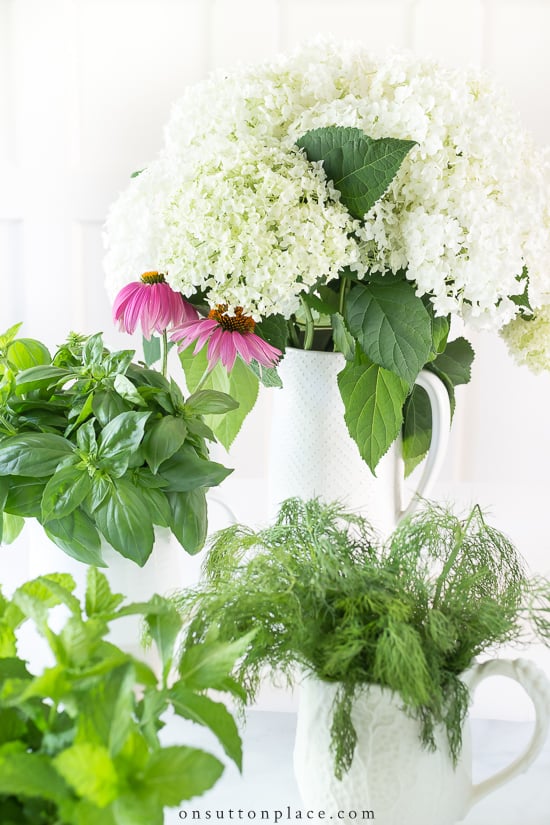
Best Companion Plants For Watermelon That Will Boost Your Yield 29 Jun 2023 5:05 AM (last year)
Watermelons are a delicious and refreshing summer treat. But growing them can be tricky. One way to improve your chances of success is to plant companion plants. Companion planting is the practice of planting certain plants together that benefit each other.
There are a number of companion plants that can help watermelons thrive. Some of the best include:
- Beans: Beans are nitrogen-fixing plants, which means they can help to improve the nitrogen content of the soil. This is beneficial for watermelons, which are heavy feeders.
- Carrots: Carrots help to suppress the growth of nematodes, which are microscopic worms that can damage watermelon roots.
- Cilantro: Cilantro helps to repel aphids, which are a common pest of watermelons.
- Dill: Dill attracts beneficial insects, such as ladybugs and hoverflies, which help to control pests.
- Eggplant: Eggplant helps to repel cucumber beetles, which are another common pest of watermelons.
- Lettuce: Lettuce helps to suppress the growth of weeds, which can compete with watermelons for water and nutrients.
- Marigolds: Marigolds help to repel nematodes, aphids, and other pests.
- Nasturtiums: Nasturtiums help to repel pests and attract pollinators.
- Onions: Onions help to repel aphids, spider mites, and other pests.
- Peas: Peas are nitrogen-fixing plants, like beans. They can also help to suppress the growth of weeds.
- Potatoes: Potatoes help to repel cucumber beetles and other pests.
- Radishes: Radishes help to suppress the growth of weeds and attract beneficial insects.
- Spinach: Spinach helps to suppress the growth of weeds and attract beneficial insects.
- Sunflowers: Sunflowers help to attract pollinators and shade the soil, which can help to keep it cool and moist.
When choosing companion plants for watermelons, it is important to consider the size and growth habit of the plants. Watermelons are large plants that need plenty of space to grow. Avoid planting them next to plants that will shade them or compete with them for water and nutrients.
It is also important to consider the climate in your area. Some companion plants, such as beans and peas, are not cold-tolerant. If you live in a cold climate, you may need to wait until the weather warms up before planting these plants.
With a little planning, you can choose the right companion plants to help your watermelons thrive. By planting these plants together, you can improve the health of your watermelons, boost their yields, and reduce the risk of pests and diseases.
Watermelons are a delicious and refreshing summer treat, but they can be susceptible to pests and diseases. One way to help protect your watermelons is to plant them with companion plants. Companion plants are those that benefit each other when grown together. For watermelons, some of the best companion plants include:
- Beans and peas: These plants fix nitrogen in the soil, which can help to fertilize the watermelons.
- Carrots: Carrots help to repel pests such as cucumber beetles and squash bugs.
- Cucumbers: Cucumbers help to attract pollinators, which are essential for pollinating watermelon flowers.
- Lettuce: Lettuce helps to suppress weeds and provides shade for the watermelons' roots.
- Marigolds: Marigolds help to repel pests such as mosquitoes, flies, and nematodes.
- Nasturtiums: Nasturtiums help to repel pests such as aphids and whiteflies.
- Radishes: Radishes help to break up compacted soil and improve drainage, which can benefit watermelons.
- Spinach: Spinach helps to suppress weeds and provide shade for the watermelons' roots.
For more information about the best companion plants for watermelons, please visit Gardenia Inspiration.
FAQ of best companion plants for watermelon
- What are the best companion plants for watermelon?
Some of the best companion plants for watermelon include:
- Beans and peas: These plants fix nitrogen in the soil, which can help watermelon plants grow stronger and healthier.
- Carrots: Carrots help to repel pests that can damage watermelon plants, such as cucumber beetles and squash bugs.
- Herbs: Herbs like basil, dill, and mint can help to attract pollinators to watermelon plants, which can help to improve pollination and fruit set.
- Lettuce: Lettuce can help to shade the roots of watermelon plants and prevent them from drying out.
- Marigolds: Marigolds are known for their insect-repelling properties, and they can help to keep pests away from watermelon plants.
- What plants should I avoid planting near watermelons?
Some plants that should be avoided planting near watermelons include:
- Cucumbers: Cucumbers and watermelons are both members of the cucurbit family, and they can compete for resources like water and sunlight.
- Potatoes: Potatoes can harbor diseases that can also affect watermelon plants.
- Squash: Squash and watermelons are both susceptible to the same pests, so planting them near each other can increase the risk of pest infestation.
- Sunflowers: Sunflowers can shade watermelon plants and prevent them from getting the sunlight they need to grow.
- Tomatoes: Tomatoes and watermelons can compete for resources like water and sunlight.
- How do companion plants benefit watermelon plants?
Companion plants can benefit watermelon plants in a number of ways, including:
- Attracting pollinators: Companion plants that attract pollinators, such as bees and butterflies, can help to improve pollination and fruit set.
- Repelling pests: Companion plants that repel pests, such as marigolds and nasturtiums, can help to keep pests away from watermelon plants.
- Providing nutrients: Companion plants that fix nitrogen in the soil, such as beans and peas, can help to provide watermelon plants with the nutrients they need to grow strong and healthy.
- Shading the roots: Companion plants that can shade the roots of watermelon plants, such as lettuce and spinach, can help to prevent them from drying out.
- Improving drainage: Companion plants that help to improve drainage, such as corn and sunflowers, can help to prevent watermelon plants from getting root rot.
- How far apart should watermelon plants be planted?
Watermelon plants should be planted at least 3 feet apart. This will give them enough space to grow and spread out.
- When should I plant watermelon seeds?
Watermelon seeds should be planted 2-4 weeks after the last frost. The soil temperature should be at least 65 degrees Fahrenheit.
Image of best companion plants for watermelon
- Sunflowers: Sunflowers attract pollinators, which helps watermelons to set fruit. They also help to shade the soil, which can help to keep it moist.
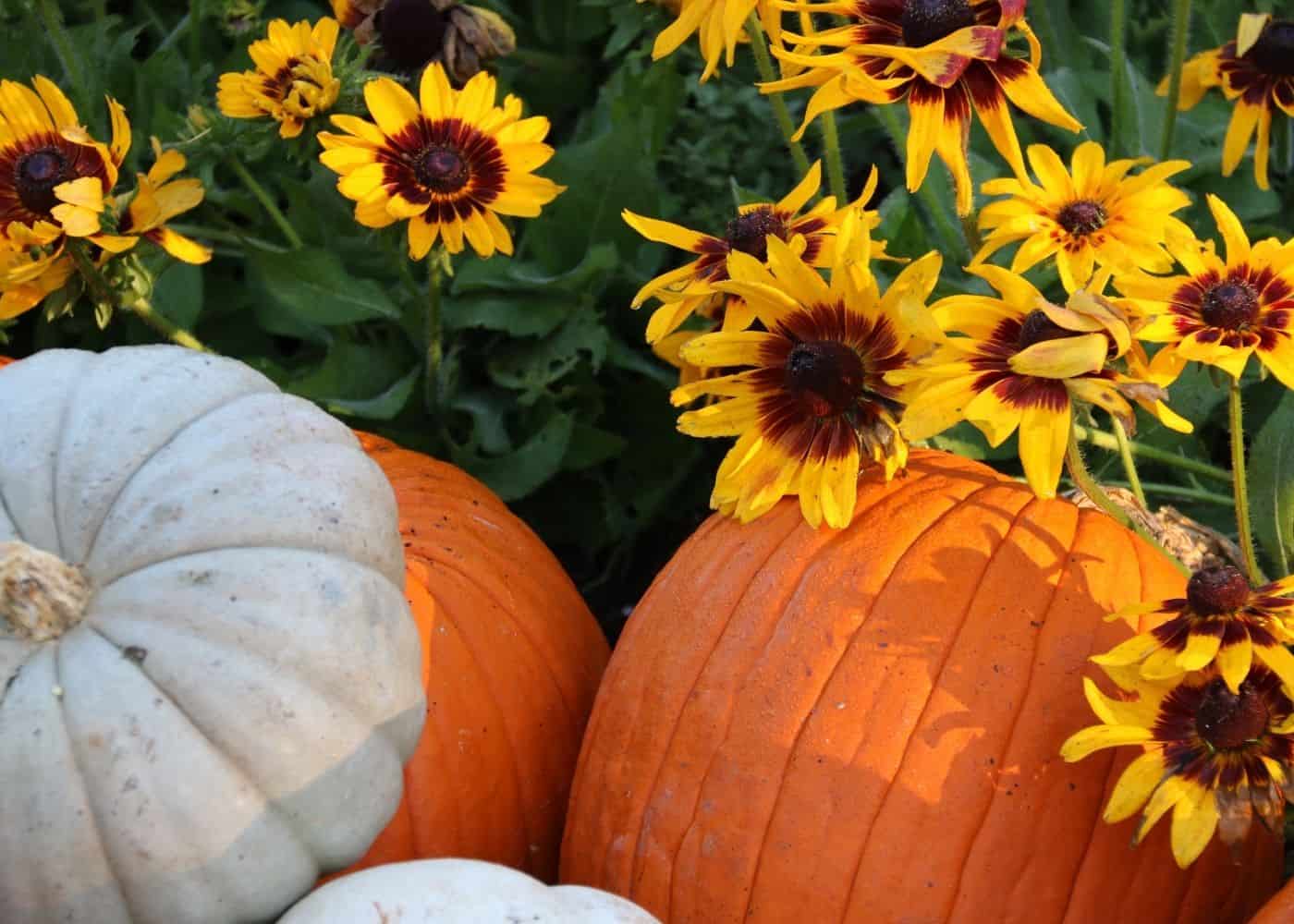
- Cucumbers: Cucumbers and watermelons have similar growing requirements, so they can be planted together. They also help to suppress weeds.
- Marigolds: Marigolds help to repel pests, such as cucumber beetles and squash bugs, which can damage watermelon plants.
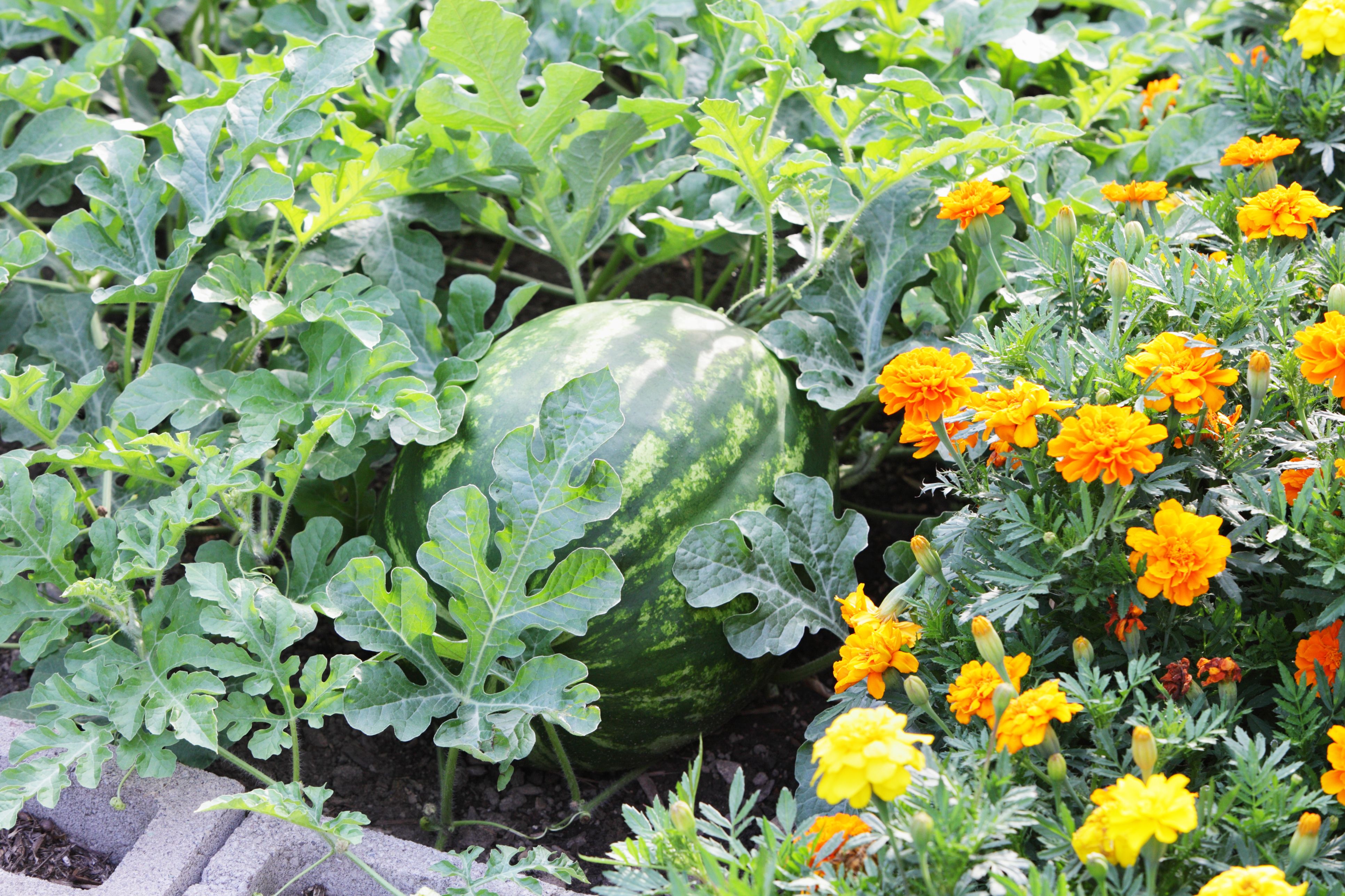
- Pole beans: Pole beans fix nitrogen in the soil, which can benefit watermelon plants. They also help to provide shade and support for watermelon vines.
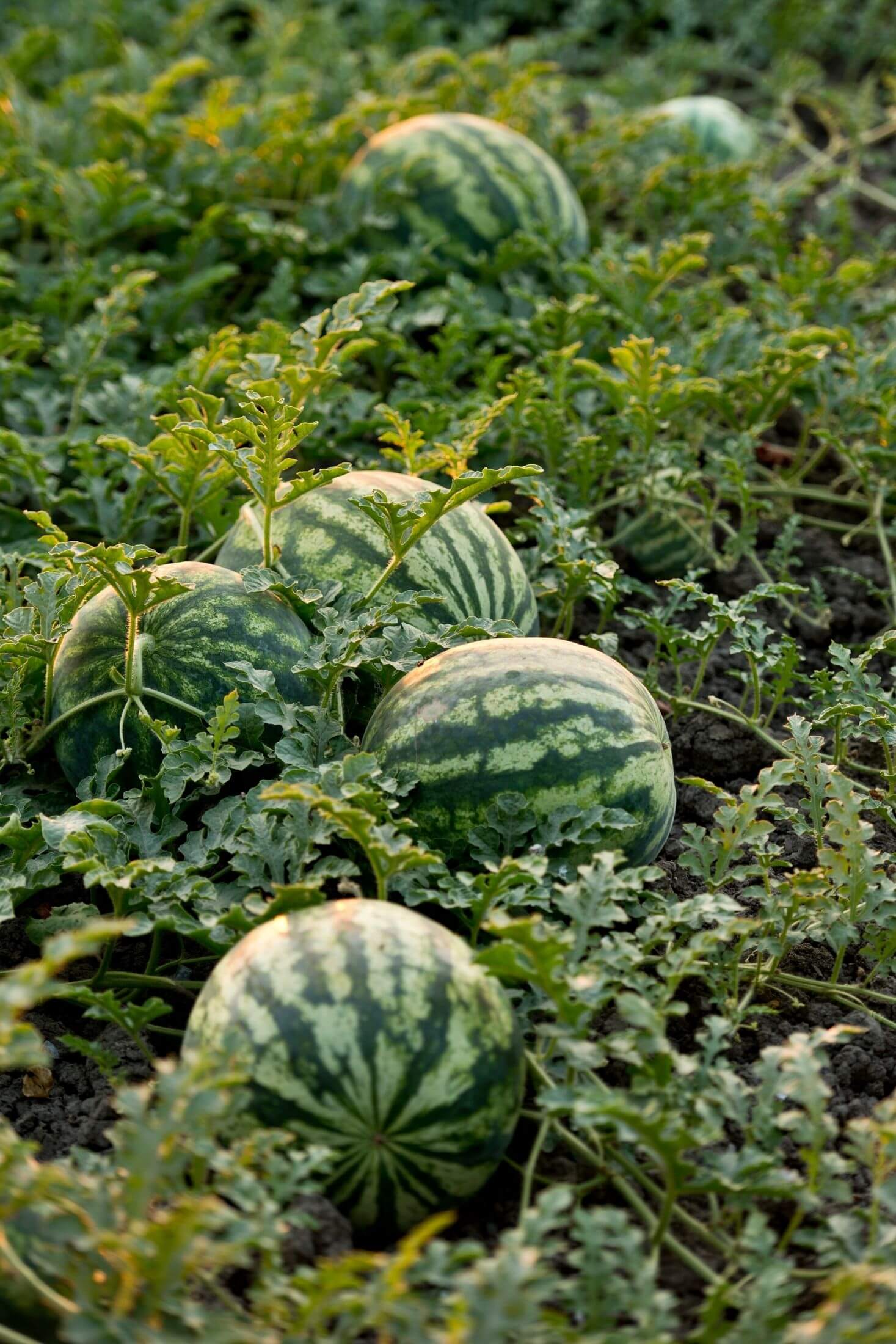
- Herbs: Herbs, such as basil, mint, and rosemary, can help to deter pests and attract pollinators. They can also add flavor to watermelons.



